Kyrrex Blog
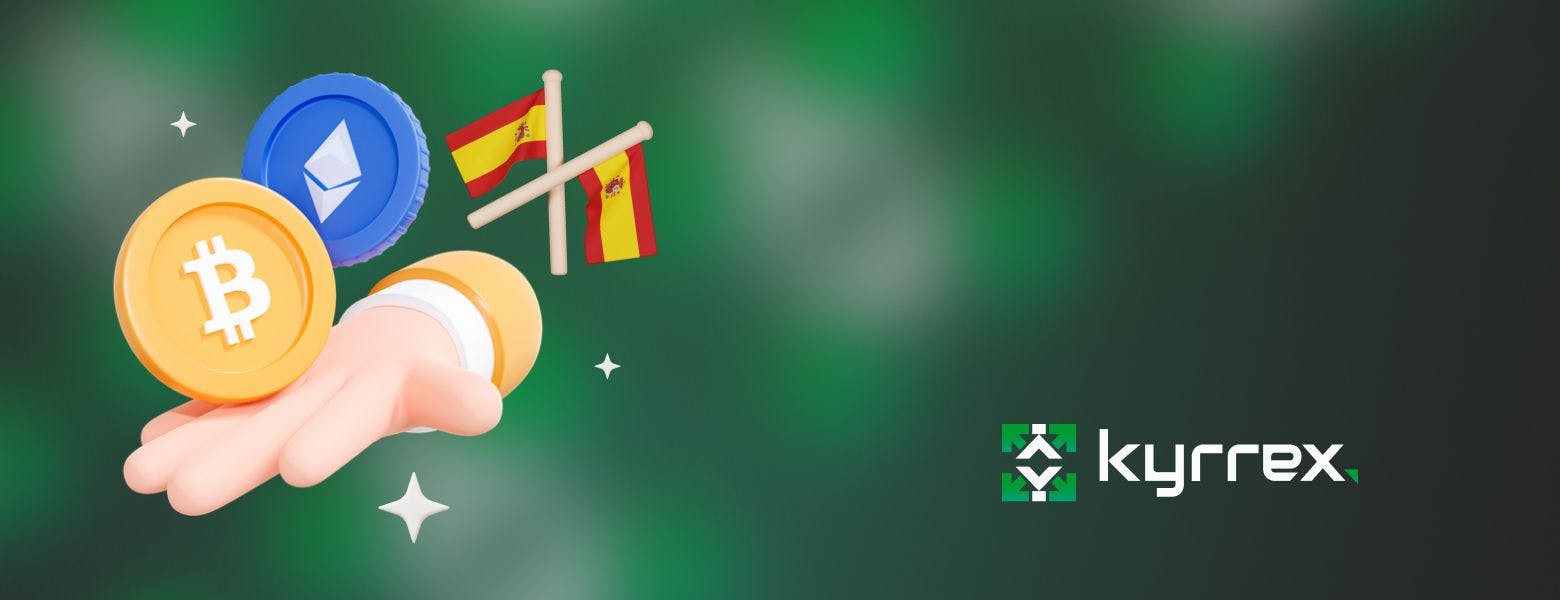
Investing in Crypto: The Spanish Approach to Criptomonedas
Criptomonedas have become super popular with Spanish investors lately, and it's not at all surprising. Spain is actually a very big crypto market, at least if we're talking about Europe. To make things even more exciting, there are loads of ways Spanish crypto enthusiasts can get in on the hot action. In this article, we will show you the various methods available if you're trying to invest in crypto in Spain.
Investing Crypto in Spain: Your Options
Whether you want to directly buy coins or would rather do so through an intermediary, the Spanish crypto market has everything you need. Let's take a look at the most common ways to get involved:
1. Direct Ownership of Criptomonedas
The most obvious way is to simply buy and hold your own criptomonedas like Bitcoin, Ethereum, or other altcoins. You can grab coins on Spanish exchanges or big international ones, then stash them in software or hardware wallets. Spain has plenty of exchanges you can use. Older and more established exchanges like Coinbase are cool; you can also try out the up-and-comers like Kyrrex.
2. Cryptocurrency CFDs
Contracts for Difference (CFDs) let you bet on whether a cryptocurrency's price will go up or down, without actually buying the coins themselves. Think of it like betting on a sports team without being the owner. Brokers like eToro and Plus500 have crypto CFDs.
3. Cryptocurrency ETFs
Exchange-traded funds (ETFs) give you a piece of cryptocurrency action through regular stock markets. These ETFs follow the prices of major cryptos, basically doing the investing for you. Spain's main stock exchange, the BME, has a few crypto ETFs listed.
4. Crypto Index Funds
Think about when you picked up a basket containing different kinds of fruit on your visit to a friend. That's what crypto index funds look like. It's one big basket that contains several different kinds of cryptocurrency. An example in Spain is the A&G Index Fund, which has 70% exposure to various cryptocurrencies including bitcoin and ether. This type of crypto investment option helps to reduce risk by spreading exposure over multiple coins.
5. Hedge Funds
If you want someone with a lot of crypto experience to do the work for you, crypto hedge funds and venture capital funds offer that. These guys pool money from a bunch of investors and a professional manager actively picks a mix of crypto for everyone.
6. Cryptocurrency Interest Accounts and Lending
Think of these like a savings account for your crypto. Places like Nexo, Celsius Network, and CoinLoan let you deposit your crypto and earn interest. You can also use your crypto deposits as collateral to borrow either traditional money or other crypto.
7. Decentralized Finance (DeFi)
DeFi platforms bring crypto's message of autonomy closer to your doorstep. You can do things like lending, borrowing, and earning rewards that your local banks also offer without breaking a sweat. It's an automated avenue to investing criptomonedas and gives you more control over your money.
8. Crypto IRAs and Annuity Products
If you are investing crypto for retirement purposes, some investment companies are starting to offer these. They give you tax benefits while investing in the future of crypto.
9. Crypto Derivatives
Just like in traditional finance, you can use crypto to enter the derivatives game. Crypto futures and options offer you a chance to gain big by predicting market moves accurately. But you need to know what you're doing otherwise you might be in a big spot of bother when your moves go awry.
10. Non-Fungible Tokens (NFTs)
NFTs are cool as digital special art, collectibles, in-game items and so on. They're even cooler when you make a profit on them. They're a speculative bet on the future of digital ownership and how we'll interact with online spaces. Most experts recommend that NFTs shouldn’t be your priority when crypto trading Spain, but they can serve as a profitable diversion.
11. Cryptocurrency Mining
Mining is how new coins are created, but it's a really complicated thing to do. Basically, miners use powerful computers to solve complex puzzles that confirm crypto transactions. In return, miners get coins as a reward, but it takes a lot of energy. You should steer clear of this on your crypto trading Spain journey unless you’re loaded to the hilt and have plenty of cash to invest.
Major Cryptocurrency Companies in Spain
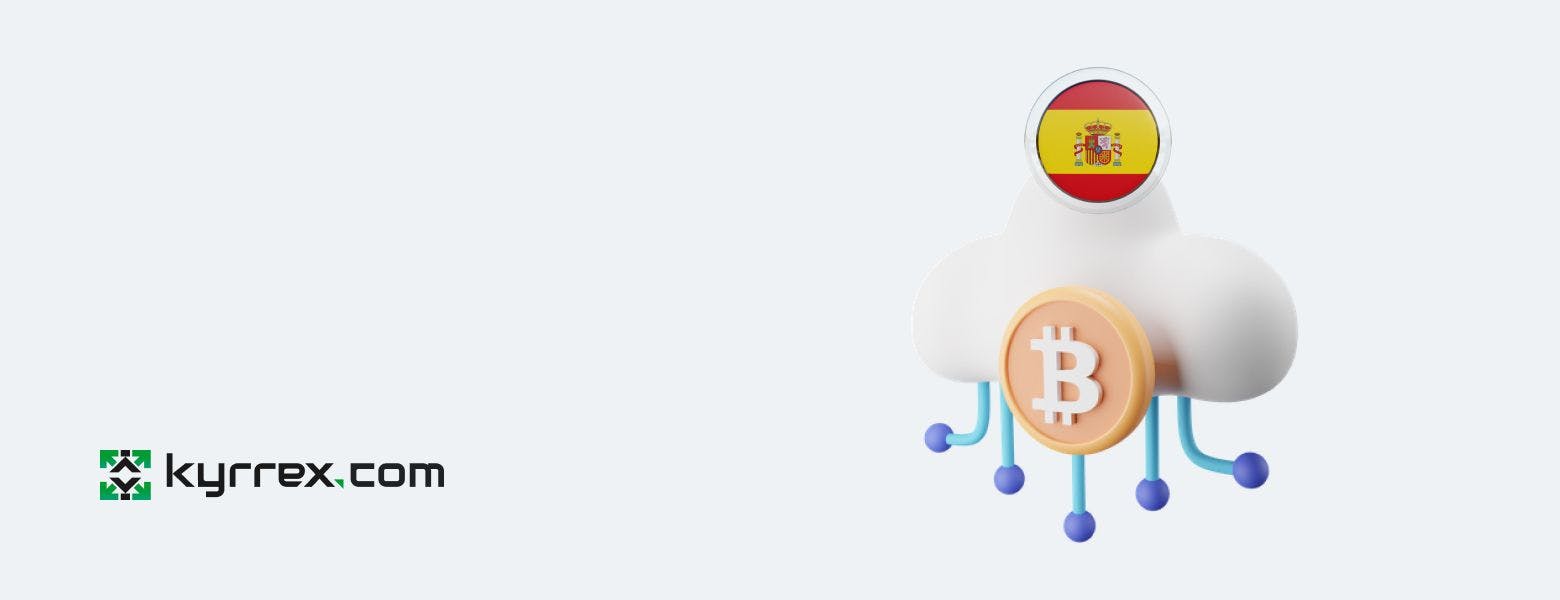
Spain is becoming a little hotbed for companies focusing on crypto. Here's a breakdown of the big areas they cover:
- Exchanges: Where you can buy and sell crypto – Bit2Me, Coinmotion, Coinbase, Criptan, Kyrrex and Bitpanda are a few.
- Wallets: Digital storage for your crypto - Coinmotion, Coinbase, Bit2Me, and Bitpanda have them.
- Payment Processors: Make it easy for businesses to accept crypto payments – like Coinmotion, Criptan, and Bit2Me.
- DeFi Platforms: Lending, borrowing, and other stuff with your crypto, all without a middleman – check out Beefy Finance and ParaSwap.
- NFT Marketplaces: Where you can buy and sell those unique digital items – try Marble.Cards, AllStarNFT, and World of V.
- Crypto Advisors: Companies that offer advice and research on all things crypto - 2gether, Collinstar, and Cartesi do this.
And there are even more—crypto mining hardware companies, blockchain development companies... The list keeps growing.
Major Banks Getting into Crypto
Even those old-fashioned banks are realizing people want crypto! Here's what some of the big ones are doing:
- BBVA: Lets you trade and store Bitcoin, Ethereum, and others right in their app.
- CaixaBank: You can buy Bitcoin and Ethereum through their investment platform.
- Santander: They have a crypto trading platform, but it's mostly for wealthy private clients.
Many banks offer some sort of crypto investment option these days.
The Tax Situation on Crypto
Spain treats crypto like any other asset you might buy and sell. So, if you make money trading crypto, you'll pay capital gains tax. Mining income is taxed like normal income.
Overall, Spain's tax rules make it a decent place to invest in crypto – some countries make it way harder on you.
Key Risks of Investing Criptomonedas in Spain
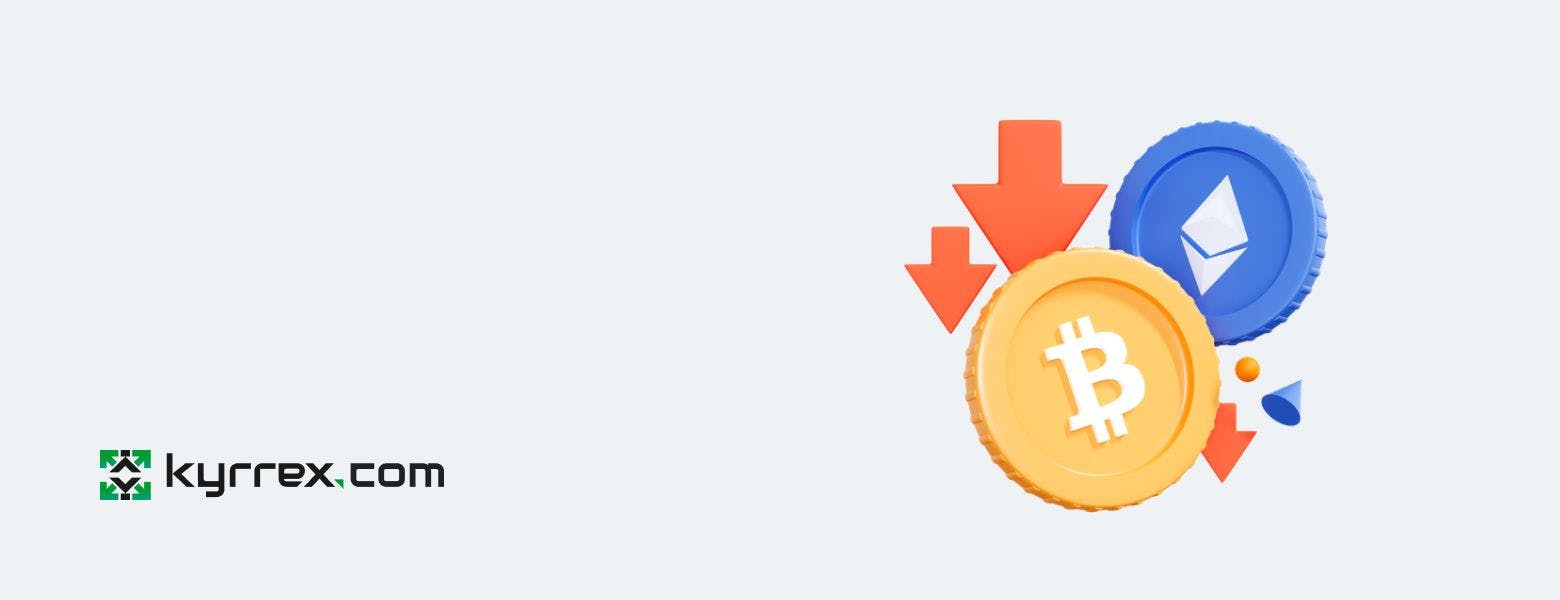
Investing crypto brings a mix of fear and hope, gains and losses. The potential is enormous and the risk is also vast. So, no matter when or where you invest your money in Spain, be prepared for the risks:
- Crazy Price Swings: Crypto values can jump up and down like a rollercoaster, It's more about speculation than steady investments.
- Regulation Issues: Regulation in many countries is far behind the advances made by crypto. As governments come to terms with the industry, it's wise to factor what they might do into your investment decisions.
- Security Woes: You must contend with having to trust your crypto with third parties—if they're on an exchange. You will also lose your crypto forever if you store them in a non-custodial wallet and forget your private keys or seed phrase.
- Bad Reputation: Crypto is used by criminals, which doesn't help its image.
- Whales Dominate: A few big players hold a ton of some coins, meaning they have a lot of control over prices.
- Hype and Panic: A lot of crypto projects rely on positive hype on their initial journey up the value chain. Unfortunately, negative hype (aka panic) can unravel all the momentum so be careful in the choice of projects you invest in.
Bottom line, you have to be able to handle risk and potential losses to invest in crypto. Safer options, like index funds, exist if that's not your thing.
Is cryptocurrency legal in Spain?
Crypto exchanges have the legal stamp of approval in Spain. Unlike other countries that treat crypto like a virus, the Spanish government embraces crypto and liberally dispenses licenses to crypto platforms that meet the regulatory criteria.
Future Outlook for Cryptocurrency Investing in Spain

With the unending influx of crypto exchanges and crypto products in Spain, the Iberian country is primed to become a choice location for digital currencies.
Meanwhile, crypto as a whole is still a new trend and hasn't quite cracked the mainstream yet. The best approach when investing criptomonedas in Spain is to treat it like an avenue for gradual financial growth. Be prudent, spread your portfolio around and be prepared to divest immediately when alarm bells strike. For investors willing to take the ride, Spain has plenty of ways to get into this exciting (and sometimes crazy) world.
Major Cryptocurrency and Blockchain Events in Spain
Spain with its great beaches and temperate climate is a fine place to live. It's also clearly a great place to host crypto meetups, going by the frequency and quality of blockchain events it hosts annually. Let's run through some of the most popular crypto-based hosted by Spain in recent years:
- Barcelona Trading Conference (BTC): A prominent European conference focused on crypto trading and blockchain technology, held annually since 2013.
- Blockchain Summit: This annual Madrid-based event explores blockchain innovation, investment trends, and regulatory developments.
- Smart City Expo World Congress: Held in Barcelona, this global summit examines the applications of blockchain within urban infrastructure and services.
- IoT Solutions World Congress: Barcelona hosts this leading conference on the Internet of Things, featuring discussions on blockchain-powered IoT ecosystems.
- Blockchain Business Forum: Madrid's premier blockchain event covers disruption and cross-industry transformation.
- Barcelona Technology Convention: This showcase highlights technological advancements, including blockchain, AI, and quantum computing, and their impacts on business and society.
- South Summit: A major startup event in Madrid with a strong history of crypto and blockchain content.
- Barcelona New Economy Week: An initiative aimed at positioning Barcelona as an international blockchain hub, featuring numerous public outreach events.
These conferences provide Spanish crypto investors valuable opportunities to connect with industry leaders, stay informed about emerging trends, highlight domestic innovation, and promote broader mainstream adoption.
Major Cryptocurrency Venture Investors in Spain

Several prominent venture capital firms are actively investing in Spanish blockchain and cryptocurrency startups:
- Seaya Ventures: Has supported crypto companies like Bitcoin remittance firm Bit2Me and crypto wealth management platform Indexa.
- Nauta Capital: Investor in digital identity startup Validated ID and blockchain software provider Onyze.
- K Fund: Backed Bitcoin ATM operator Criptan and crypto tax startup Libra Tax.
- Big Sur Ventures: Invested in the NFT platform MarbleCards and crypto education app Belearner.
- Finanbest: Funded Bitcoin payments processor Coinmotion.
- Active Venture Partners: Backer of the decentralized finance protocol ParaSwap.
- Keiretsu Forum: Invested in crypto real estate startup Homes4Coins and crypto gaming ecosystem World of V.
By attracting local and international venture capital, Spanish crypto startups gain resources to compete on a global scale while contributing to the domestic economy. This further strengthens the overall crypto ecosystem within Spain.
Conclusion
Spain offers a variety of regulated channels for cryptocurrency investment, ranging from direct coin ownership to DeFi protocols. Supportive legislation fosters greater legal certainty for investors. Those with a higher risk tolerance can take advantage of Spain's dynamic blend of progressive regulation and grassroots innovation. However, caution is always advisable given the inherent volatility of cryptocurrencies. Overall, Spain presents a positive environment for responsible and informed crypto engagement.
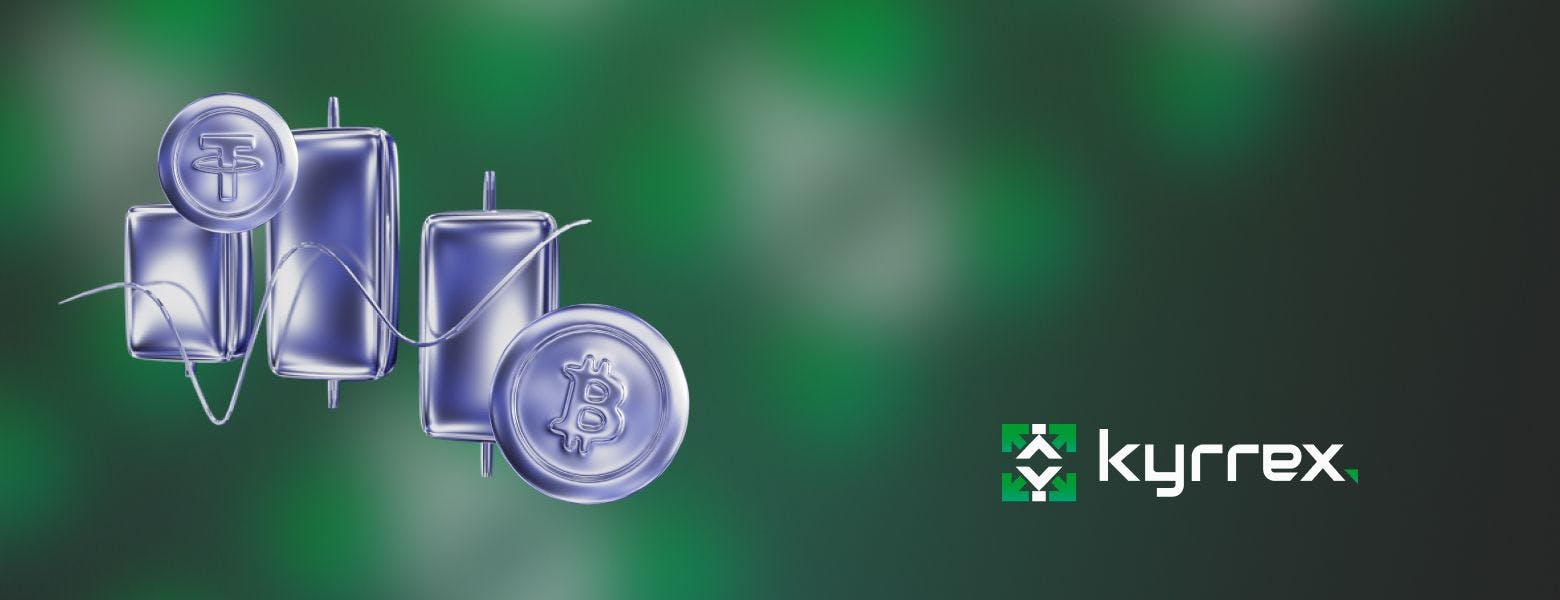
Crypto Trading Pairs Made Easy: Understanding BTC/USD vs. BTC/USDT
If you're new to cryptocurrency, you might be scratching your head over terms like BTC/USD and BTC/USDT. Don't worry; they're simpler than they seem! Think of them as little price tags for Bitcoin. Let's break down what they mean and why they're important.
What's the Deal with Trading Pairs?
Trading pairs are like the language of cryptocurrency markets. They tell you how much of one thing you can get for another. It's the same idea as exchanging Euros for US dollars – you've got a pair! BTC/USD and BTC/USDT simply show the exchange rate between Bitcoin and another asset.
BTCUSD: The Classic Bitcoin Price Tag
BTC/USD is the most basic way to see how much Bitcoin is worth in US dollars. If BTC/USD is at $20,000, it means you'll need 20 grand to buy one Bitcoin. This pairing is like your classic price tag, making it easy to compare Bitcoin's value against the most common currency in the world. Just remember, like any currency, the price of Bitcoin goes up and down based on how much people want to buy or sell it.
BTCUSDT: Meet the Stablecoin
BTCUSDT tells you the value of Bitcoin in Tether (USDT). So, what's Tether? Well, it's what we call a "stablecoin." Stablecoins are special cryptocurrencies designed to hold a steady value – think of them as the less-jumpy cousins of regular crypto. One USDT is supposed to always be worth one US dollar.
So, if the price of BTC/USDT is $20,000, it still means one Bitcoin equals $20,000. The difference is that you're looking at the price through the lens of a stablecoin.
Why Bother with Stablecoins?
Here's where stablecoins get cool:
- Taking a Break from the Rollercoaster: Crypto prices can be super bouncy. Stablecoins are like safe havens. If things get too wild, traders can swap their Bitcoin for USDT to keep the same dollar value without cashing out completely.
- Trading Made Smoother: Stablecoins make it easier and faster to switch between different cryptocurrencies. Think of USDT like the universal translator of the crypto world.
BTC USD vs. BTC USDT: The Lowdown
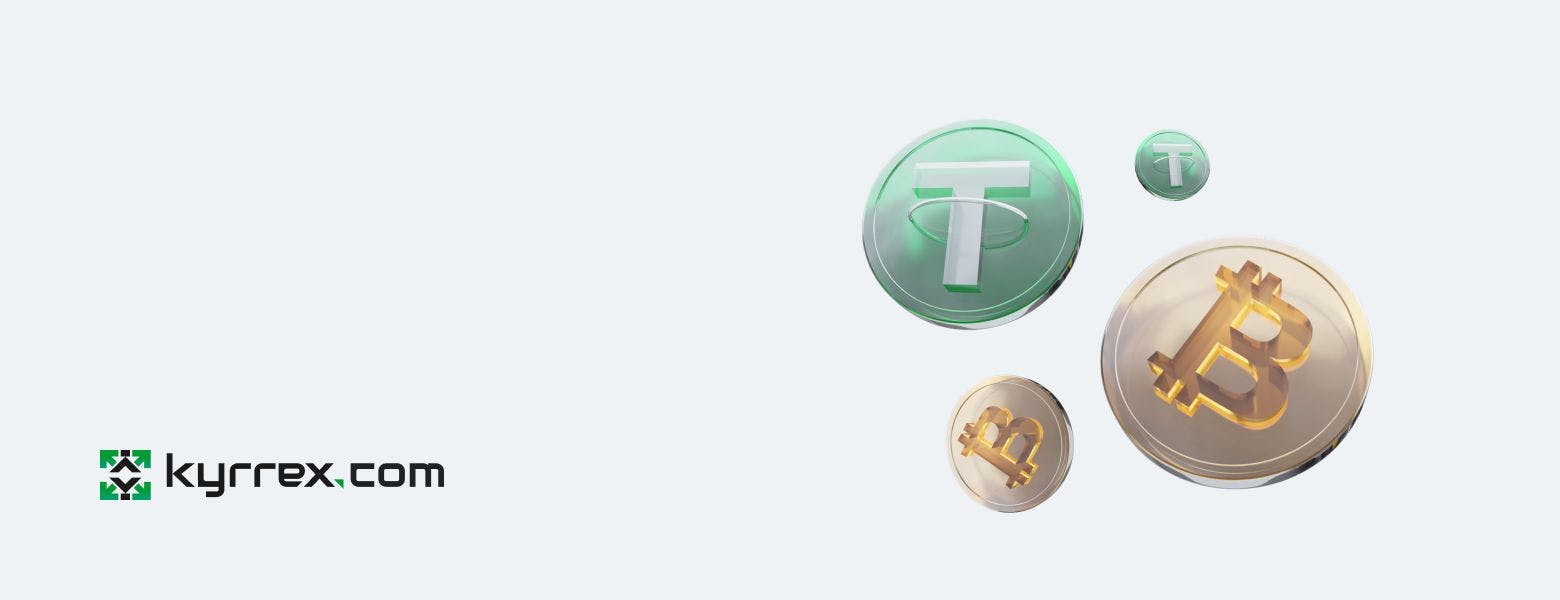
Okay, now you get the tickers, but how are they really different? Here's the simple version:
- BTC/USD is the rollercoaster. It shows Bitcoin's price against the US dollar, which changes all the time thanks to the crazy world of finance. BTC/USDT is pegged to the dollar, so it's less bumpy.
- BTC/USD is for ups and downs. It pairs two things that change in value constantly. BTC USDT is more chill (usually) because Tether is designed to stick to $1.
- BTCUSDT is for crypto adventurers. It makes switching between different cryptocurrencies a breeze, no need to mess with regular dollars. BTC/USD is better for folks who just want to trade Bitcoin the old-fashioned way.
- BTC/USD is dollars and cents. Simple and clear. BTC USDT is more like a roundabout way of showing the same thing.
- BTC USDT is where the action is. Because of the stablecoin magic, you'll usually find more people trading with BTC/USDT on the big exchanges.
- BTC/USD is for classic investors. If you care about the dollar value and want to day trade, stick with this.
Both are super important ways to trade Bitcoin. Which one is right for you depends on whether you like a smooth ride or the thrill of the market!
BTCUSDT vs. BTCUSD: Usually the Same, Sometimes Not
If you check out the price charts, you'll see that BTC/USD and BTC/USDT prices usually move in sync. Makes sense, since Tether is meant to mirror the US dollar. But here's the thing – things can get a little weird sometimes.
When the crypto market goes totally nuts, Tether can sometimes get knocked off its $1 peg. It might dip below a dollar or even spike above it. That's when you get a difference between the two charts… and a chance for quick-thinking traders to make a profit fixing things.
But don't worry, over the long run, the charts for BTC/USD and BTC/USDT tend to stay pretty close. After all, they're both tracking Bitcoin's value against the dollar, just in slightly different ways.
BTC/USDT: The Crypto Crowd Favorite
We mentioned that BTC/USDT usually sees way more trading action than BTC/USD. Well, the numbers really back this up. A recent study showed that BTC/USDT trading volume was more than 7 times higher than BTC/USD over the past year. Plus, way more exchanges offer BTC/USDT trading.
This tells us that crypto traders definitely lean towards using Tether. It's also interesting that BTC/USDT trading is spread out across exchanges, while BTC/USD is clumped up on a few big ones like Coinbase. This likely means it's easier for exchanges to set up Tether trading, while dealing with actual dollars has more hoops to jump through.
The Takeaway

Okay, so BTC/USD and BTC/USDT both track Bitcoin's value against the dollar, but they do it differently:
- BTC/USD: The raw deal. It shows you Bitcoin's price against the dollar, no tricks. This price goes up and down based on how much people want Bitcoin at that moment.
- BTC/USDT: The smoother option. It shows you Bitcoin's worth in Tether, which is meant to stay around $1. This can help shield you from the crypto market's crazy price swings.
Why it matters:
- BTC/USD: Straight-up reality check. This is the best way to see Bitcoin's actual value in the 'real world'.
- BTC/USDT: The crypto trader's tool. If you're always swapping between cryptocurrencies, Tether makes things easier since you don't have to mess with regular dollars as much.
Both BTC/USD and BTC/USDT are important tools for understanding Bitcoin's price and trading in the crypto world. Whether you're into long-term holding or fast-paced crypto action, knowing how these pairs work will help you navigate the market with confidence.
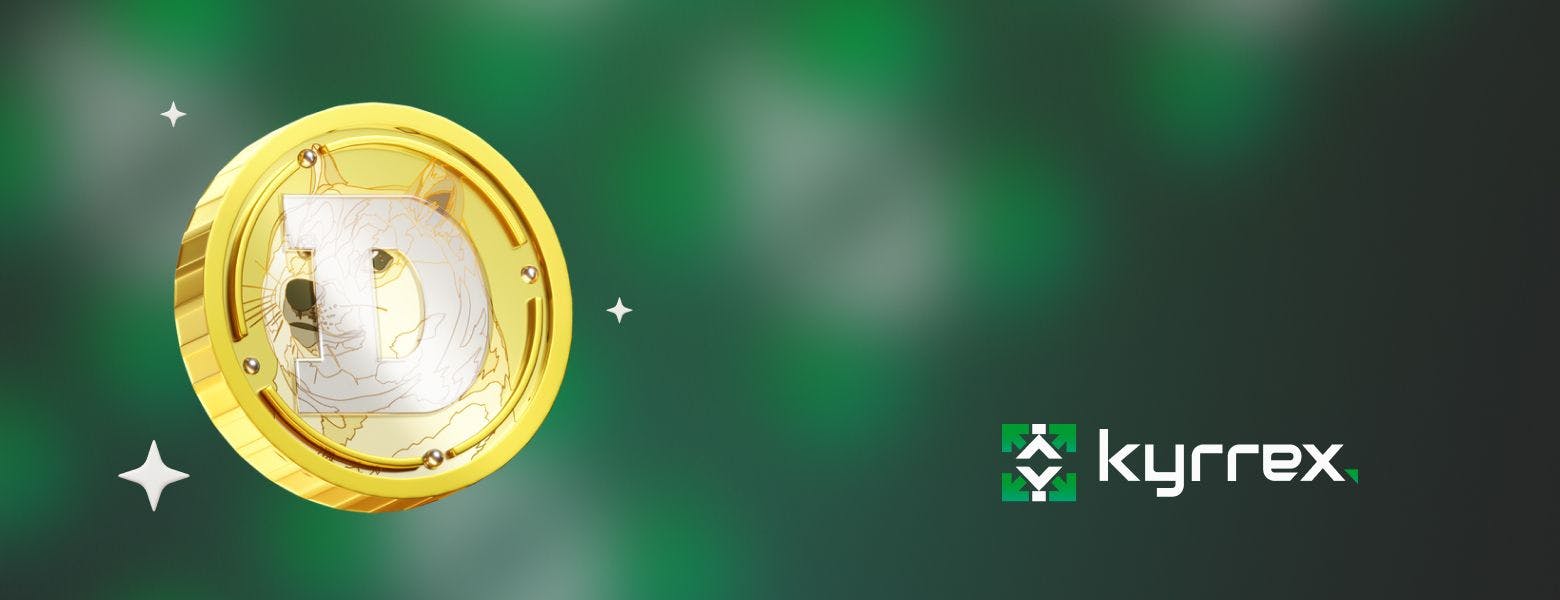
The Story of DOGE: How a Meme Became a Leading Cryptocurrency
Dogecoin (DOGE) is one of the most well-known and widely-used cryptocurrencies today. But unlike Bitcoin and Ethereum, which were created with serious intentions, Dogecoin has much humbler origins—as an internet meme that took on a life of its own. This is the story of how a joke became a multi-billion-dollar cryptocurrency.
The Birth of DOGE

In 2013, software engineers Billy Markus and Jackson Palmer launched Dogecoin as a satirical take on the sudden hype surrounding cryptocurrencies. They branded the coin's logo using a popular internet meme at the time featuring a Shiba Inu dog accompanied by broken English phrases like "wow" and "such coin."
Markus has said Dogecoin was created "to poke fun at the wild speculation going on in cryptocurrencies." The lighthearted approach was meant to encourage more casual participation since Bitcoin was perceived as too serious and inaccessible to the average person.
Going Viral: DOGE Takes Off
Though created as a parody, Dogecoin quickly took off and developed an online community. The low Dogecoin price and unlimited force made it popular on social media.
In December 2013, the Dogecoin community raised $30,000 worth of DOGE coins to send the Jamaican bobsled platoon to the Sochi Winter Olympics when they couldn't go. This and other high-profile charity fundraising campaigns associated with Dogecoin generated media attention and goodwill.
By early 2014, Dogecoin's market cap had reached over $60 million. Its community on Reddit boasted over 85,000 subscribers. DOGE established itself as a prominent altcoin and proved that a cryptocurrency didn't need to be serious or technically groundbreaking to gain significant attention.
The Power of Memes: DOGE in Pop Culture
A major factor in Dogecoin's continued fashionability has been its use in internet memes and viral content. The meme-friendly coin represents a confluence between cryptocurrency and internet culture.
On Reddit, Twitter, and other social platforms, Shiba Inu memes featuring expressions like "1 DOGE = 1 DOGE" and" To the moon!" have kept Dogecoin circulating in online exchanges. This grassroots marketing, amplified by memes, has propelled DOGE's brand recognition.
Celebrity signatures have also given Dogecoin periodic boosts. In 2020, Elon Musk posted memes about DOGE on Twitter, leading to a sharp Dogecoin price increase. Mark Cuban and Snoop Dogg have also shown support for the meme coin. DOGE thrives on its pop culture applicability.
Serious Growth in 2021
In early 2021, Dogecoin endured a gradual rise fueled by growing interest on social media and from institutional investors. In January, the r/WallStreetBets subreddit that boosted GameStop stock began encouraging investments in Dogecoin. Dallas Lions proprietor Mark Cuban even blazoned that his organization would accept DOGE for wares and ticket deals.
In May 2021, DOGE hit an all-time high of $0.7376 shortly after Elon Musk appeared on Saturday Night Live and called Dogecoin the" future of currency." The coin's market cap reached over $80 billion. This period demonstrated that Dogecoin had progressed far beyond its meme-rooted origins. Major companies and investors were now treating DOGE as a legit digital asset.
The DOGE Community
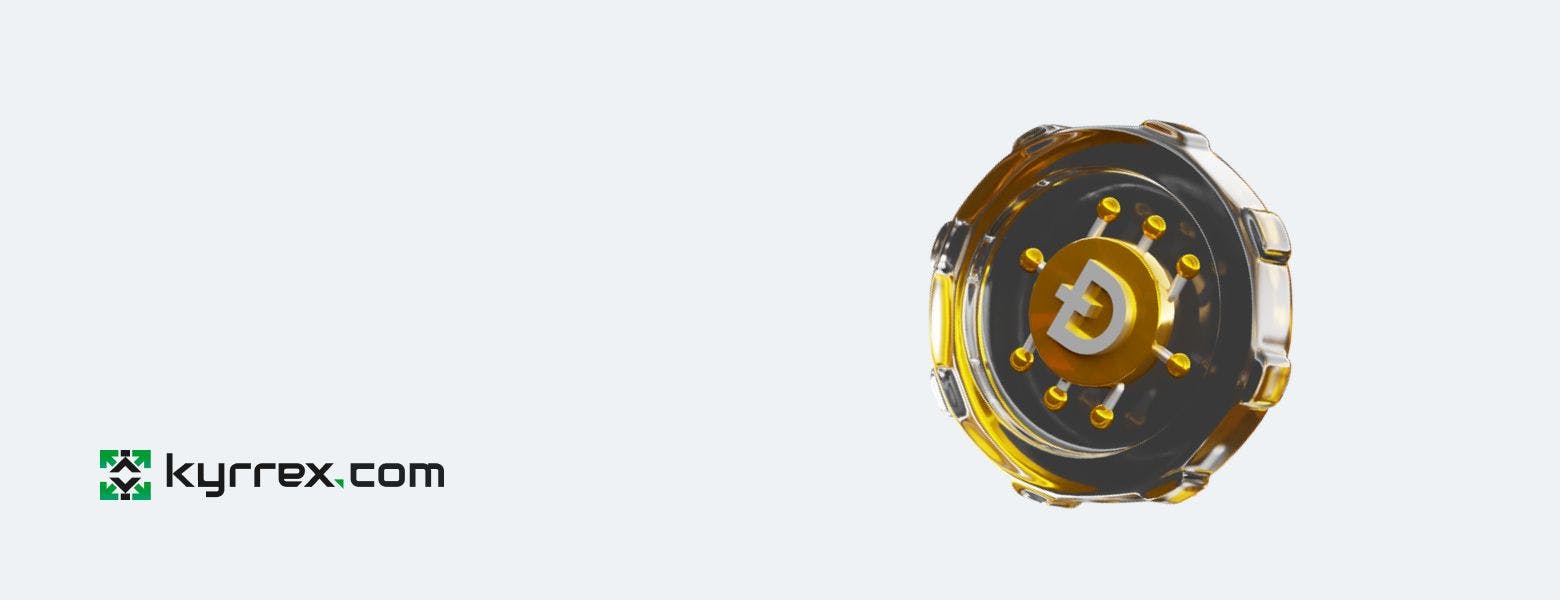
A crucial part of Dogecoin's identity and success has been its vibrant online community. On Reddit, Twitter, and Discord groups, Dogecoin backers organize fundraising drives, create memes, and spread enthusiasm for the coin.
Unlike some cryptocurrency groups, which are exclusive and specialized, the Dogecoin community prides itself on being accessible to beginners. It embraces DOGE's roots as an approachable, unconcerned coin for the internet legions rather than solely a serious investment vehicle. This grassroots energy and fidelity have helped drive the Dogecoin euro price surge and given it a distinctive appeal.
Criticisms of the Dogecoin Price Model
Some critics argue that Dogecoin's lack of genuine invention or usefulness makes it a bad cryptocurrency compared to blockchain innovations like Ethereum. Its unlimited supply and the low Dogecoin euro price also mean the cryptocurrency is super volatile and easily manipulated.
Others contend that Dogecoin derives its value purely from jokes and marketing hype rather than mileage. They see the coin as a pump-and-dump scheme centered around online hype rather than fundamentals.
Proponents argue that the Dogecoin blockchain is still growing and already faster compared to Bitcoin. They point to DOGE's growing number of fans, users and developers as proof that is has segued into something meaningful beyond just internet hype.
DOGE Milestones

Despite the naysaying in certain quarters, Dogecoin has achieved several milestones that demonstrate its progression into a mature cryptocurrency.
- In 2014, Dogecoin innovated the use of merged mining with Litecoin, allowing miners of both coins to partake in calculating power for increased effectiveness. This was an early, specialized use case for DOGE.
- Major brands like Slim Jim have run marketing campaigns centered around Dogecoin and memes. This indicates commercial interest in tapping into the DOGE phenomenon.
- The nonprofit Dogecoin Foundation was revived in 2021 after a period of dormancy. The renewed interest in supporting the coin's open-source development reflects its growing mainstream appeal.
- DOGE is now supported by most major cryptocurrency exchanges and trading and payment apps like Robinhood and Coinbase. Availability for investors and consumers has improved significantly.
The Future of DOGE

As crypto tokens go, Dogecoin is one of the major and most recognizable. People have grown to rely upon it as a cultural touchstone for cryptocurrency humour and Old Internet jokes alike. That being said, what exactly does the future hold for DOGE; after it has shaken off its meme-derived roots and become a more mature technology?
Some see Dogecoin as a means of payment that is faster and cheaper than ever before. Others feel it is essential for DOGE to make inroads into decentralized finance (DeFi) solutions and the NFT space.
Still, for Dogecoin to advance to the next level, critics say it needs to continue developing its burgeoning technology for real-world usage. More serious investment in development and mainstream partnerships is needed for DOGE to thrive in the long term.
But if its history has shown anything, it's that coins like Dogecoin shouldn't be underestimated. DOGE has once already defied disbelievers and cemented its place in cryptocurrency lore. The vibrant community of Dogecoin is its X factor, something that many coins hardly have.
As a joke coin, Dogecoin has already realized remarkable successes. One hopes for its future, but this meme coin-cum-bitcoin continues to show that internet culture must not be overlooked when evaluating the future potentials of crypto.
The Technology Behind DOGE

While created as a meme coin, Dogecoin operates on a real blockchain and cryptocurrency network. Understanding the technical rudiments provides insight into its functionality.
The Blockchain
The Dogecoin blockchain is predicated on Luckycoin, which itself derives from Litecoin. It uses a decentralized proof-of-work system where miners compete to solve mathematical problems and produce new blocks. This secures the network and provides the foundation for DOGE as a cryptocurrency.
Mining Dogecoin
Dogecoin mining uses the Scrypt algorithm, which is less complex than Bitcoin's SHA-256. Scrypt mining can be performed with even basic PCs rather than the precious ASIC equipment demanded for Bitcoin mining. This makes the Dogecoin network more accessible.
Transaction Speed
Dogecoin's 1 minute block time makes DOGE 10 times faster compared to Bitcoin's 10-minute finality time. This speed enhances Dogecoin's suitability for point-of-trade purchases, micropayments, and other transactional uses.
Unlimited Supply
A crucial difference from Bitcoin is Dogecoin's emission rate. 10,000 DOGE are mined per block, with no limit on the total number created. This provides an inflationary counterpoise to Bitcoin's fixed supply. If there is anything that can pause or even reverse the long-term Dogecoin price momentum, it is this inflationary aspect of its tokenomics.
Keeping Dogecoin Relevant
DOGE might have been the best success story of the crypto memecoin craze, successfully fending off fierce competition from Shiba Inu and the array of new challengers from the Solana space. However, nothing lasts forever—success will eventually dissipate if not sustained and Dogecoin is no exception. Over the years, the community has rolled out a few things to make sure that the cryptocurrency retains its spot in the limelight.
Current Developments
The original core developers of DOGE have long sailed into the sunset. However, a new group of dedicated developers have taken up the mantle and continue to maintain the Dogecoin codebase. There are even plans underway to upgrade the network with special features and advancements that will keep it relevant in the digital currency space.
Major DOGE Events
Dogecoin has long moved past sole reliance on viral moments and meme to gain traction. Now an established behemoth in its own right, the network continues to make its mark through major events and fundraisers. Here are some noteworthy instances:
- 2014 Winter Olympics: The Dogecoin community raised $30,000 worth of DOGE coins so the Jamaican bobsled platoon could attend the Sochi games. This put DOGE in the media spotlight for the first time.
- Doge4Water: In 2014, the Dogecoin community bestowed over $50,000 worth of DOGE to fund the creation of clean water wells in Kenya. This remarkable feat was one of the very first demonstrations of crypto’s transformative impact on charity.
- Doge4NASCAR: The community sponsored NASCAR motorist Josh Wise to the tune of over $55,000 in DOGE coins. The DOGE logo on his car and jumpsuit brought Dogecoin's name into mainstream sports.
- DOGE-1 Satellite: In 2021, Dogecoin funded the DOGE-1 satellite set to launch through SpaceX. It'll be the first crypto-funded project in space and collect lunar data.
These caption-grabbing moments have shaped Dogecoin's story and shown that it's more than just an internet meme.
How to Buy DOGE and Check Dogecoin Price
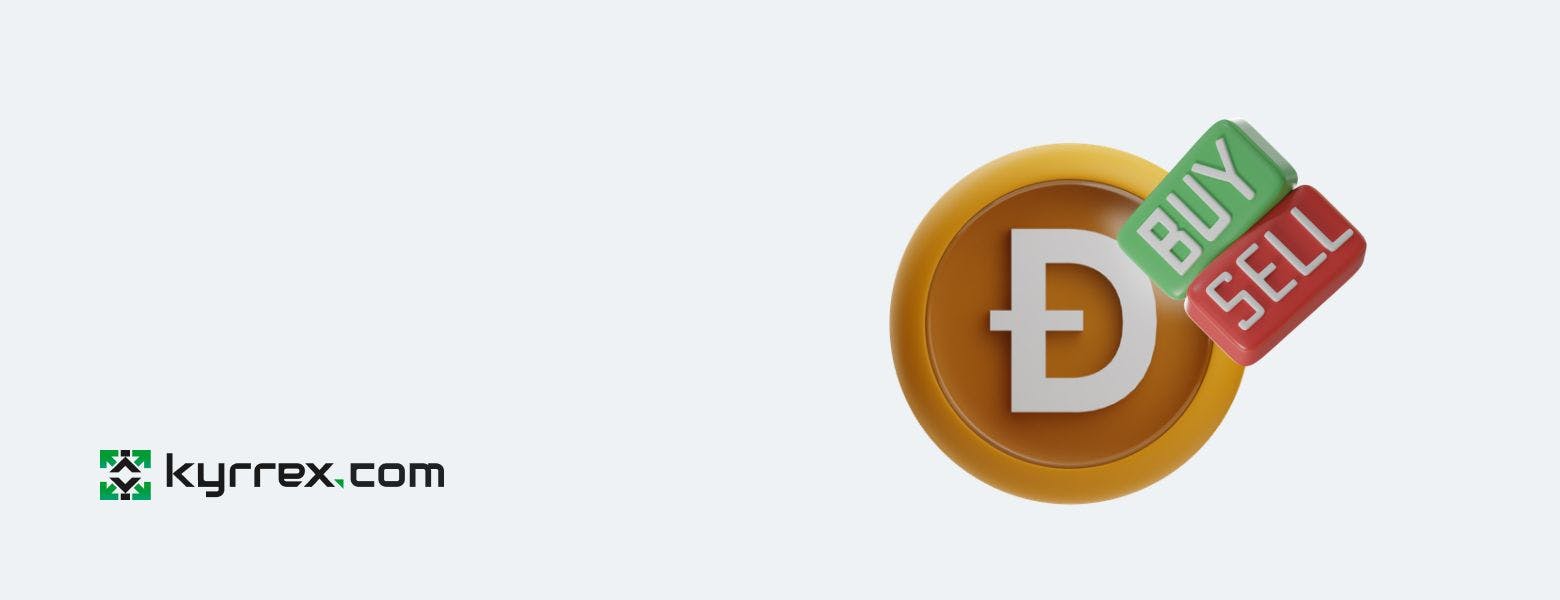
For those interested in this notorious memecoin, it's easy to buy Dogecoin. There are many options.
- Exchanges: Major crypto exchanges like Kyrrex, allow direct DOGE purchases with fiat or crypto. This is the most straightforward buying method.
- Trading Apps: Apps like Robinhood and Webull offer quick signup and the capability to buy Dogecoin without actually holding the coin itself.
- Wallets: Software and hardware wallets like Trust Wallet or Ledger let users buy DOGE directly and store it securely. Some of them also allow spending DOGE at merchandisers accepting the coin.
- Mining: Users can mine DOGE by joining a Dogecoin mining pool and contributing calculating power. Still, single mining isn't very practical for average users.
- P2P Trading: Websites like LocalDogecoins connect buyers and sellers directly for DOGE trading without a central exchange. This allows for fast deals.
What Can You DO With Dogecoin?
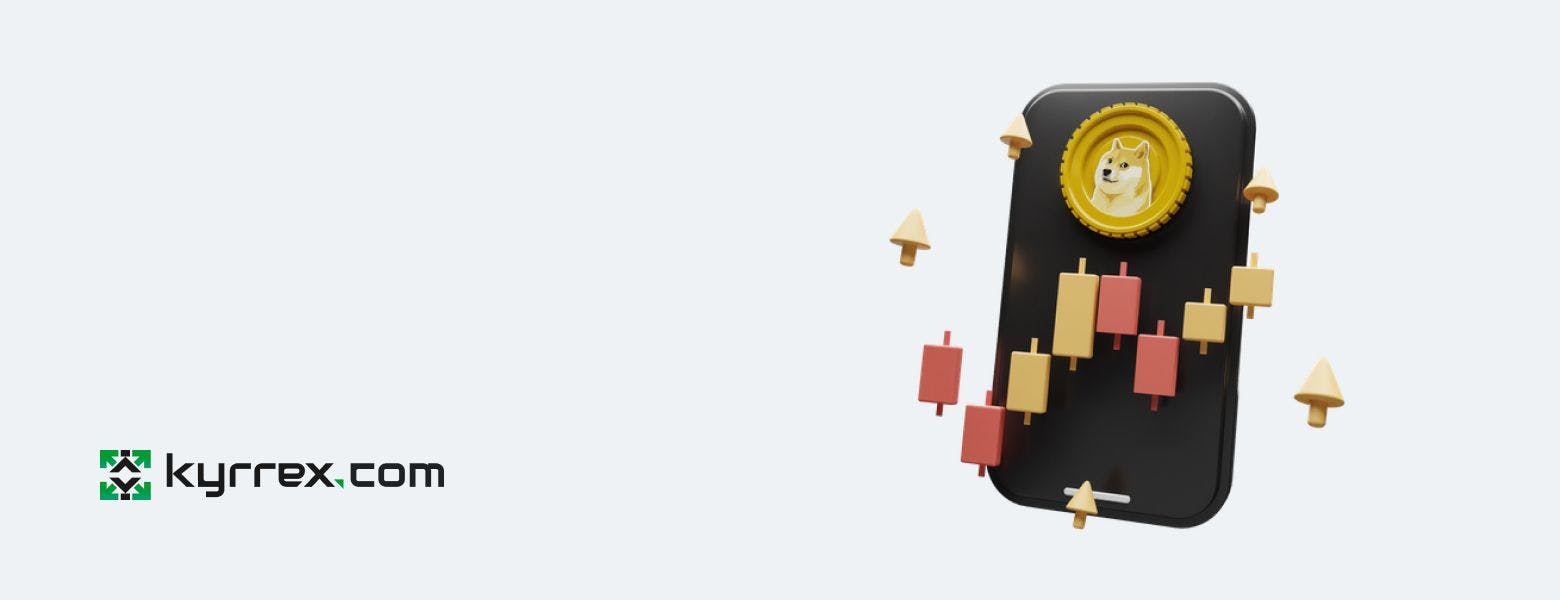
While frequently treated as a joke or memecoin, Dogecoin can still be used for serious purposes.
- Paying for Goods and Services: A number of crypto businesses now accept DOGE as a payment method. The picture is less rosy outside the crypto space but you can still find a few online markets that either already accept the token or may do so in the future.
- Tip Jar for Content Generators: DOGE is one of the favorite tipping methods online. Bitcoin and ETH used to be more popular tipping methods. But now that they are both super pricey, coins like DOGE have stepped into the gap.
- Trading and Investment: Punters and investors trade DOGE with the end goal of profiting from the Dogecoin price volatility.
- Money Transfer: DOGE offers a fast way to transfer value digitally due to its speed and low costs.
- Donations/Fundraising: As demonstrated by its early moves in the charity space, Dogecoin can be—and indeed has been—used for both single large donations and community fundraising.
Conclusion
Dogecoin is an intriguing intersection between cryptographic technology and internet culture. Born of a meme joke, it has become a major cryptocurrency with billions of dollars in real-world value and a devoted community.
Nevertheless, questions about the likelihood of DOGE becoming a blockchain with more advanced capabilities and real-world use cases continue to linger. Perhaps, it will remain as chiefly an entertainment tool and an avenue for daring speculators to realize their dreams.
Dogecoin is, at the very least, an educational case study. It is a testament to the power of online communities and how far enthusiasm and devotion can achieve. Whatever happens, the DOGE currency has already accomplished more than its creators ever anticipated.

UK Crypto Tax: Full Guide to Regulations and Taxations 2024
Cryptocurrency investment has seen a rise in popularity in the UK! However understanding the tax implications of crypto can be daunting for newcomers. This guide aims to simplify the concept of UK crypto tax so that you can grasp your obligations as an investor.
Here's what we'll discuss;
·The fundamental principles of crypto taxation
·Instances where you are required to pay Income Tax on activities like mining or staking
- How to calculate your Income Tax liability
- When Capital Gains Tax is applicable when selling crypto for a profit
- Steps to determine your Capital Gains Tax obligation
- Tax allowances that may lower your tax bill
- Guidelines on reporting transactions to HMRC
- Essential records you should maintain
- Utilizing tax software to streamline the process
- Seeking professional tax assistance if needed
Our aim is to demystify UK crypto tax, empowering you to invest confidently! We will walk you through all the regulations and procedures in a simple manner.
Cryptocurrency can be both thrilling and perplexing. Lets shed some light on cryptocurrency taxes in the UK so that you can unwind and enjoy the journey! Keep reading to become well informed about UK crypto taxation.
The UK government (HMRC) categorizes cryptocurrencies like Bitcoin as assets or property and not actual currency. This means that crypto falls under existing UK tax legislation. It does not have its own “crypto tax" category.
Categories of UK Crypto Tax
For folks looking to invest they'll mainly have to deal with Capital Gains Tax and Income Tax.
- Capital Gains Tax: The Capital Gains Tax is charged on any sale or disposal of cryptocurrency worth more than what was originally paid for it. That can include trading for fiat currency or other cryptocurrencies; goods or services; gifts, etc.
- Income Tax: If you earn cryptocurrency by doing things like mining, staking, peer-to-peer lending, airdrops etc., you may have to pay income tax on it. HMRC sees this kind of crypto as miscellaneous income: that is, taxable.
But don't worry—you only have to pay tax on your profits or earnings when they outweigh the tax-free allowances given to you, and these are generous by traditional standards. For most people who invest in crypto only occasionally, there's no tax bill at all. It's frequent traders and those making larger investments who might find themselves owing taxes.
In a nutshell, HMRC doesn't regard crypto as money but rather as taxable property. Capital Gains Tax and Income Tax, following the existing UK tax law, are the main taxes that apply to crypto. But for occasional or small-scale crypto investors, that's unlikely to make any difference at all to their tax situation.
Income Tax: Paying Taxes on Your Crypto Earnings

Receiving cryptocurrency through certain activities is considered by the HMRC as taxable income. There are some ways people earn crypto-pounds which would be subject to Income Tax:
- Being paid by an employer in crypto - Whether your employer gives you part or all of your salary this way, it's just normal income to HMRC.
- Successfully mining coins - Your computer mines for you and makes new tokens, so that counts as taxable income.
- Staking coins to validate transactions - The crypto you earn from staking is taxable.
- Earning interest on crypto loans - All interest you receive would be taxable.
- Receiving free coins through an airdrop - Airdropped coins count as a taxable income even though they're free to receive.
- Yield farming, or offering liquidity - If you receive tokens this way, they are taxable.
- Receiving coins from a hard fork - Forked coins you received for free are an income event.
In most cases, cryptocurrency earnings are seen as "miscellaneous income" for tax purposes. The only exception is employer-paid crypto wages.
The good news is that you only owe Income Tax on cryptocurrency if your total income exceeds the £12,570 tax-free allowance for 2023-24. If you stay under that threshold, then your crypto earnings are tax free!
Determining Your Cryptocurrency Tax Liability
If your total earnings are more than the UK Personal Allowance, then follow these steps to work out how much income tax is payable on gains from cryptocurrency.
- First, you must establish the exchange rate on the date that each of your taxable dividends was paid in crypto and convert into sterling. Previous exchange rates can be used.
- Next, add together all the pound sterling values for your taxable crypto income from the tax year.
- Add this total of crypto-incomes to other emoluments from employment, self-employment, property, interest and all other sources.
- Use the standard Personal Allowance of £12,570 as a deduction from this figure to find your total taxable income.
- Use income tax bands to work out which rate - 20%, 40% or 45% (the additional rate) - you should apply to the total of your taxable income.
- Now multiply your total taxable income from cryptocurrency and all other sources of earnings by the relevant tax rate.
The Income Tax amount calculated should be paid to HMRC on or before the due date for payments.
Capital Gains Tax: When the Taxman Comes for Your Crypto Gains

Let's be real - no one enjoys paying taxes. But if you profit from crypto, HMRC will want a slice of the action. As far as the UK taxman is concerned, crypto assets like Bitcoin are property. Just like if you flipped houses or traded stocks for a profit. So they slap on Capital Gains Tax for any crypto gains you realize.
Brace yourself to owe Capital Gains Tax if you:
- Cash out your crypto for pounds and come out ahead
- Swap one crypto for another and make a profit on the exchange
- Use crypto to buy stuff and the value rose since you bought it
- Gift crypto to someone besides your spouse and it gains value
- Get free crypto from an airdrop then sell or swap it later at a higher price
Now the positive spin - you only pay tax on gains above the tax-free allowance, which is a relatively meagre £3000 this tax year. (Don’t look at us like that—blame Jeremy Hunt.) So smaller crypto players often dodge Capital Gains Tax.
And married couples get double - you both have your own separate £3000 allowance. So between you, that's £6000 in tax-free crypto profits in the 2024-25 reporting year. The bottom line - HMRC will come collecting on any big crypto windfalls you have. However modest investors can often avoid Capital Gains Tax.
How to Calculate Your Crypto Tax UK Capital Gains Tax
Hit a jackpot with your crypto and go beyond what the taxman lets you keep tax-free. Let's break down how you can figure out the Capital Gains Tax that's coming out of your pocket:
- Calculate what you've put in. This means ringing up the initial price and any extra costs for each crypto piece you've let go of.
- Chase down what you got for it
- Look for the British Pound value on the actual day you waved goodbye to your crypto.
- Do the math: selling price minus what you spent
- Take what it cost you and subtract it from what you pocketed to find out your profit.
- Put all your wins together
- Gather all the profits from each time you cashed out on crypto within the tax year.
- Remember your tax break
- Subtract the £3000 you don't have to pay taxes on to see what's left.
- Figure out the tax bite
- If you're in the basic tax bracket, put aside 10%. Those in the higher bracket, get ready to hand over 20%.
- Whip out the UK crypto tax calculator for the last step
With that tax rate in mind, analyze the taxable gains and see how much damage your bank balance is likely to take.
Figuring out your crypto taxes just seems to be a treasure hunt--for ancient transactions. Calculating precisely how much money you’re giving the government doesn’t sound even the tiniest bit fun. This is why intelligent investors use tax software to sort everything out instead.
Reduce Your Crypto Tax Bill with Tax-Free Allowances

Besides the regular Personal and Capital Gains Allowances, you can use additional generous tax-free reliefs for crypto income:
- Gift tax-free up to £3,000 of crypto each year through the Annual Exempt Amount for Gifts.
- Transfer assets tax-free between spouses. This can be used to bypass crypto UK tax.
- Reduce the tax you owe by offsetting losses against total Capital Gains.
- The first £1,000 of miscellaneous trading income can be earned tax-free. This is called the Trading Allowance.
- Donate to registered charities tax-free. Donating crypto means not just Income Tax but also Capital Gains Tax are excluded.
- Place crypto in an Individual Savings Account (ISA) wrapper to shelter it from tax.
- Contribute crypto to your pension plan and in this way reduce your taxable income.
When you calculate your ultimate crypto tax bill, factor in these allowances and exemptions you can utilize. Thorough record-keeping enables you to successfully claim any allowances you are entitled to.
How to Report Crypto Taxes to HMRC
Each year you must complete a self-assessment tax return in order to officially report and pay any Income Tax or Capital Gains Tax due on your crypto trades. The self-assessment deadline is 31 January of the next year. Therefore, online returns must be filed by 31 Jan 2025 for the 2023-24 tax year.
When completing your return, you'll report:
- Crypto income on the foreign income section
- Crypto capital gains on the capital gains summary
On the basis of your Self-assessment, HMRC works out your total tax bill for the year including allowances. Any tax due must be paid on 31 January, as well.
If you miss the deadline for reporting or payment, you can expect financial penalties from HMRC. Therefore, get into the habit of preparing well in advance for your crypto taxes.
How to Keep Records for Crypto Taxes
Good record-keeping is the key to getting your tax return right and reducing your crypto tax bill. For each transaction potentially liable to tax you should record:
- Date Acquired
- Acquisition cost in GBP
- Date of disposal
- Disposal value in GBP
- Fees incurred
- Nature of transaction
It's best to keep track of all this as you go along, making it easy to pull together at tax time. If you use only a few trading platforms, their account history may suffice for your tax preparation. However, if you trade across many different platforms, manually compiling transaction data can be extremely difficult. At such times tax software is essential.
Use Crypto Tax Software
Crypto tax preparation is fraught with difficulties, so most investors turn to specialized tax software for help. Leading providers such as CoinLedger, Koinly, CoinTracking can:
- Import your transaction data automatically from exchanges using API connections
- Interface with wallets and block explorers to capture full transaction records
- Match and synchronize data from across all of your accounts
- Calculate your capital gains and losses
- Generate the necessary tax reports for filing
This means you no longer have to collect your wallet addresses and do the math yourself. Every top crypto tax UK calculator also syncs directly to reputable tax filing suites like TurboTax. However, you must ensure that whatever software you use for handling crypto tax also meets the reporting requirements of Self-assessment to HMRC.
Get Professional Tax Advice
If you are heavily involved in crypto investing, it could well be worth consulting a professional accountant with expertise in crypto taxes.
A crypto accountant UK specialist can help you:
- Correctly classify your crypto transactions
- Benefit from exemptions and relief
- Arrange your holdings in a tax-efficient manner
- Keep complete records of all payments in compliance with the latest HMRC regulations
This specific advice comes at a cost. But the reduction in taxation likely more than compensates for this.
Key Takeaways of UK Crypto tax Regulations
With crypto investing on the rise, an understanding of UK crypto tax rules is vital. By following the guidance in this article, UK crypto holders can remain compliant, minimize their tax bills, and avoid issues with HMRC.
- UK tax laws view crypto as an asset, not a currency
- Income Tax must be paid on crypto derived from activities such as mining and staking
- Capital Gains Tax is payable when crypto is disposed of at a profit
- You'll only be charged tax on crypto profits/income over any applicable tax-free allowances
- Thorough records are essential to accurately estimate the taxes due for crypto
- Transaction data gathering and tax work can be automated using accounting software
- If your crypto dealings are substantial or complex, seek professional tax assistance
With much current interest in investing in cryptocurrencies, a knowledge of UK crypto tax regulations is necessary. By following the advice in this article, UK taxpayers can stay compliant. While remaining within the law they are better able to minimize their tax bills and lessen their chance of having problems with HM Revenue & Customs.
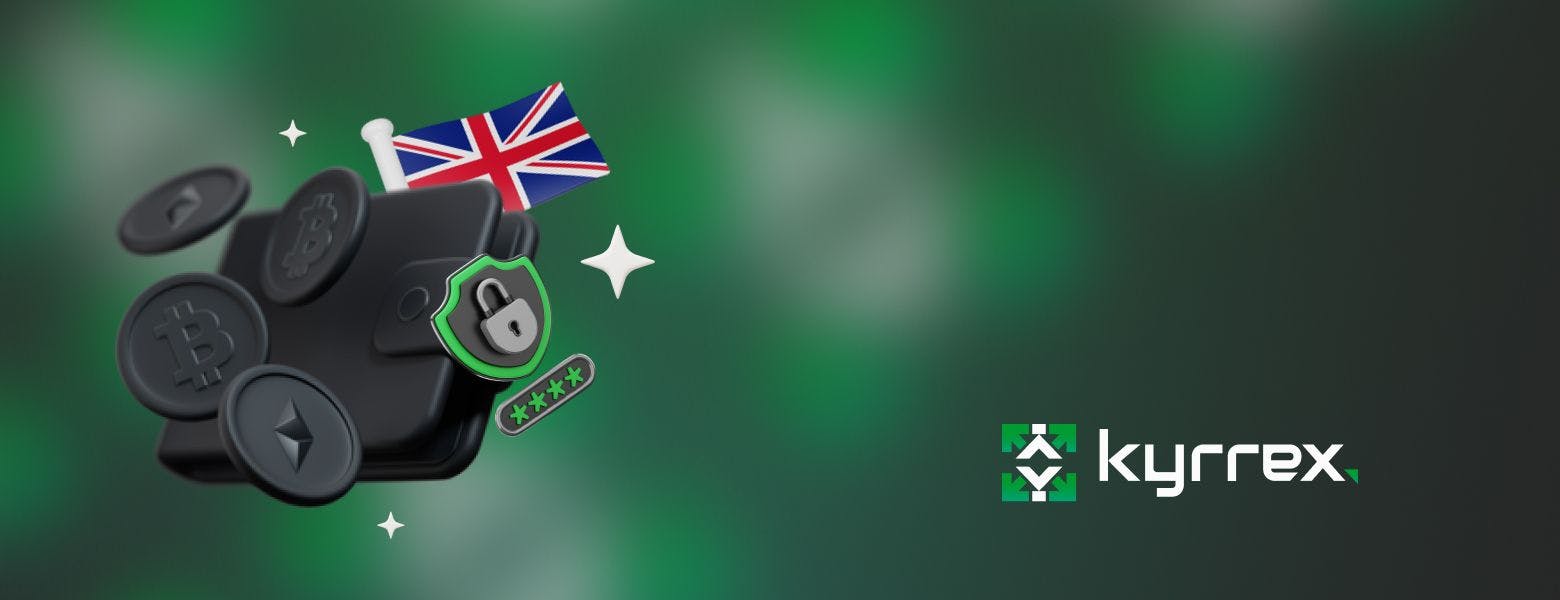
Crypto Wallet UK: How to Safely Store Your Digital Assets in 2024
From its humble beginnings, cryptocurrency has muscled onto the scene and become a viable method of making, investing and saving money. Digital money such as Bitcoin and Ethereum have a lot going for them, including reduced transaction time and seamless cross-border payments. But concerns remain, especially as regards the security of crypto assets. Since digital money is becoming mainstream, good wallet security is needed to protect it against numerous threats, including fraud. This overview focuses on various aspects of cryptocurrency security, including how to protect and store your digital money.
Understanding Cryptocurrency and its Security Vulnerabilities
Cryptocurrency relies on blockchain technology. This is a transparent, immutable and usually decentralized system that facilitates trustless transactions. Because of how a blockchain works, the possibility that records get altered is very small. However, the platforms and services that we use to interact with the major blockchains are a different kettle of fish. Even as we freely use crypto UK wallets to buy and save our digital money, we must keep in mind that these platforms are relatively vulnerable to cyber-attacks. Even the best crypto wallet UK isn’t safe from being hacked if good wallet security isn’t implemented.
The security gaps in these tools provide a perfect opportunity for cybercriminals that conduct theft, fraud, and numerous other forms of harmful acts. Therefore, integrated robust security mechanisms such as secure walleting, strong authentication, and complex encryption should be implemented to protect against transaction-related security and privacy threats.
A Complete Cryptocurrency Security Guide
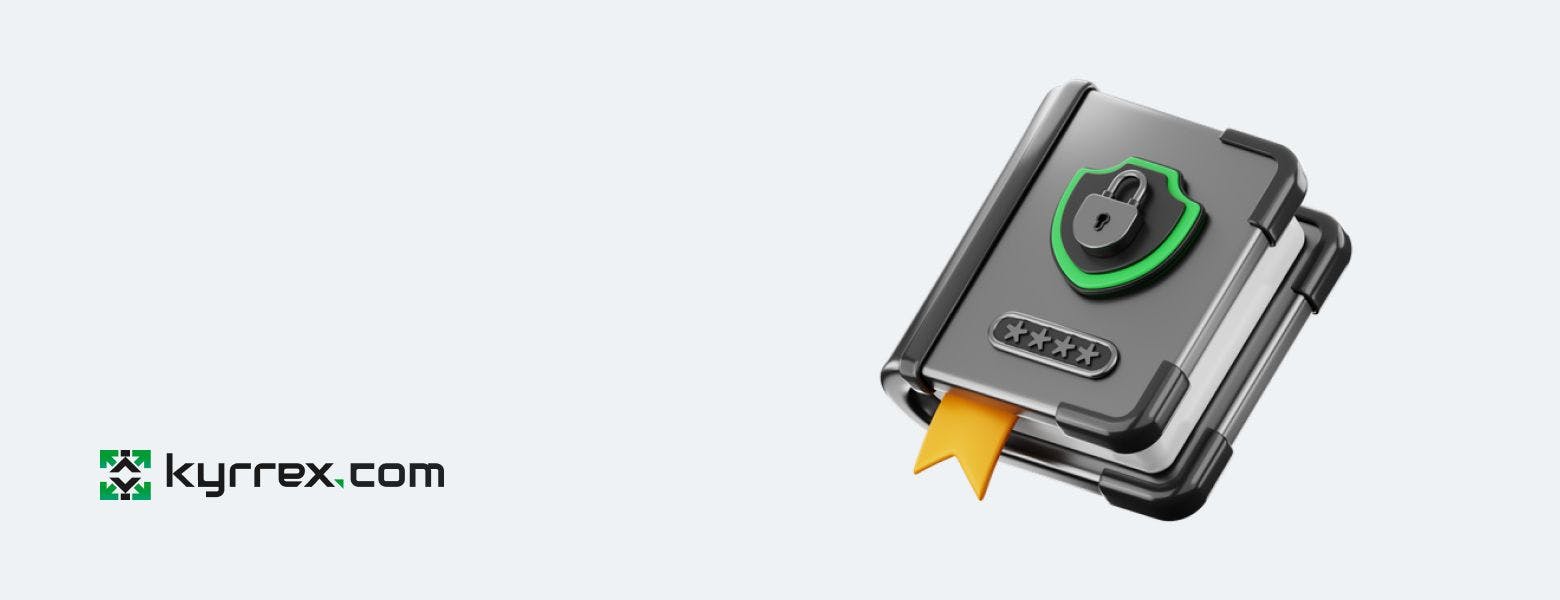
Ideally, the protection of digital currency wallets should be implemented holistically, encompassing the process from selecting the wallet to enhancing the strength of the password and educating about potential risks, especially various types of fraud and social engineering, such as phishing.
Selecting a Crypto Wallet
The first step to increasing the safety of your cryptocurrency in the UK is to choose a crypto wallet UK that is secure and fits your needs. Wallets are typically divided into two categories: hot and cold.
- Hot Wallets:
They are internet-connected and make it easy for you to make daily transactions. This kind of wallet is however more susceptible to cyber-attacks.
- Cold Wallets:
Cold wallets are divided into hardware and software wallets. Cold wallets store your cryptocurrency offline, which eliminates the risk of a web-based attack.
- Hardware wallets:
like the Ledger Nano S, Ledger Nano X, and Trezor Wallets give you the ultimate protection. You keep your private keys on an offline device which protects your assets even if your personal computer or phone becomes compromised.
If, instead of using a hardware wallet, you write down your public and private keys (seed phrase) on a piece of paper and hid it somewhere, then you have a paper wallet. In many ways, paper wallets offer the strongest form of protection. Unless someone raids your house and makes away with the paper, your wallet remains secure. One downside of a paper wallet is that it doesn't actually store your crypto offline, only the keys to the wallet. You still need to input the keys into a hot or hardware wallet to interact with your coins.
Knowing about the various wallet types helps beginners get a firm grasp of basic cryptocurrency security. This will help them to make informed decisions on how to safeguard their digital assets as the threat level keeps rising.
How to Strengthen the Security of Your Crypto Wallet UK:
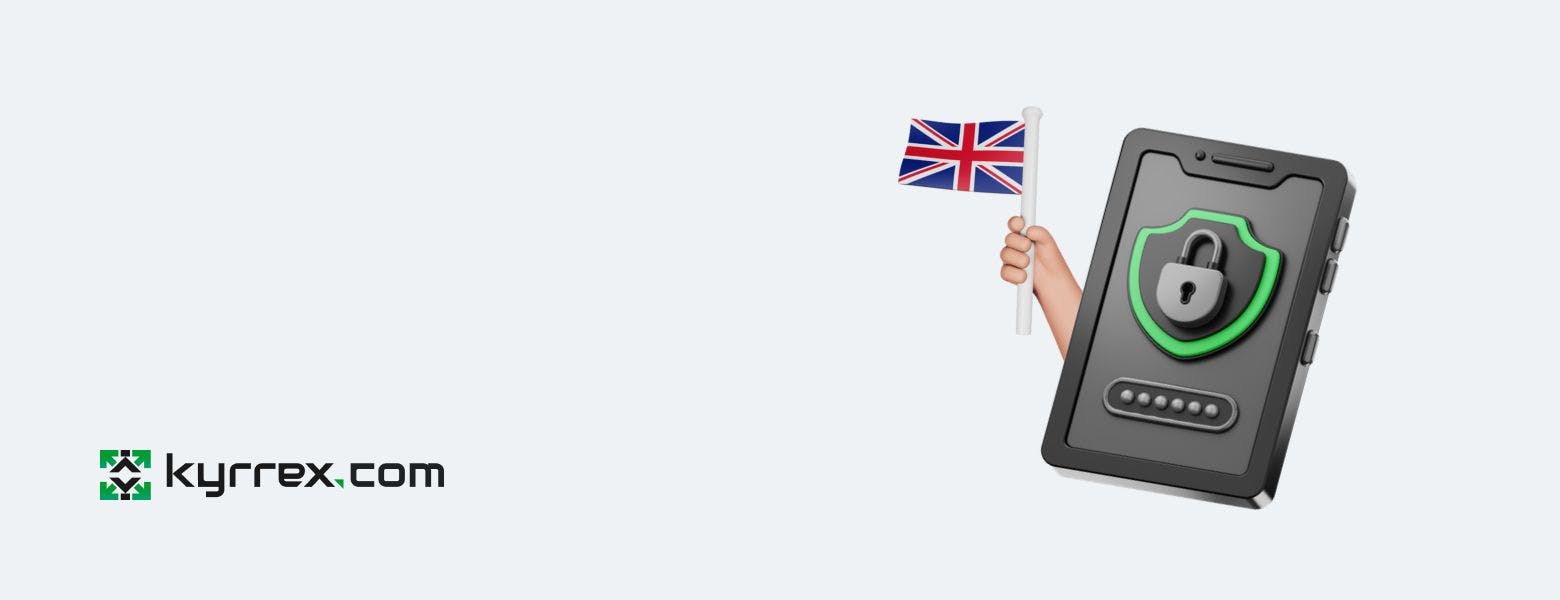
1. Strong passwords
Use strong, unique passwords for your accounts and wallets, and use a password manager to ensure complex passwords are maintained safely.
2. Two-factor authentication
With 2FA, not only will you need your password to access your accounts, but also another form of verification. This way, even if someone gets your password, they won’t be able to break into your accounts unless they somehow manage to also get the 2FA code.
3. Evade Phishing Attempts
Be on the lookout for phishing efforts which aim to deceive you into giving out sensitive information via fake links and communications.
4. Update You Apps and Devices
Ensure your wallets, computers, and phones are frequently updated. This will protect you against any discovered vulnerability that has been rectified in an update. You also get instant access to any newly-added security features.
Advanced Crypto UK Wallet Security Practices
1. Diversification
Avoid all keeping your crypto stash in one place; you’re going to incur a big loss if it gets hacked. Keep different amounts in various storage options for ultimate security.
2. Backup and recovery
Frequent backups of your wallets are essential; store the backups in different secure places.
3. Use MultiSignature Wallets
This type of wallet needs multiple signatures before it can be unlocked. With this, an attacker needs to jump through multiple hoops to unlock access to your funds and their prospects of success diminishes with each attempt.
The Anatomy of Secure Digital Asset Storage
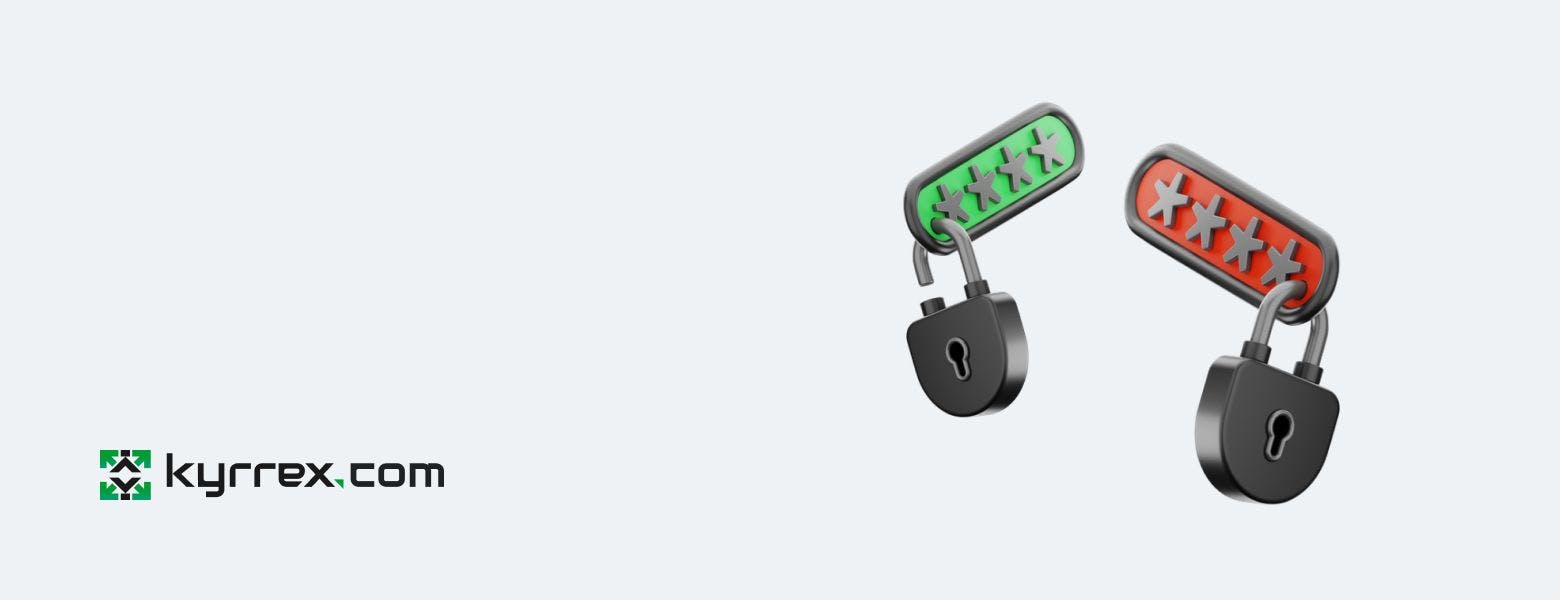
A new seed phrase is created when you first set up a wallet. This seed phrase equates to your private key while the wallet address serves as your public key. If you lose your private keys or seed phrase, your wallet becomes inaccessible until you recover it. Also, if someone else gains access to your seed phrase, they can use it to access your wallet and move your funds away. This is why it is critical to carefully consider your storage solutions and choose the one that assures you of the greatest security at the best convenience.
Types of Custody Solutions:
There are two broad methods to store your cryptocurrency. They are self-custody and third-party custody.
1. Self-Custody Solutions
This type of custody gives you direct control over your wallet and the coins in it. This is because the private keys of the wallet are known only to you. So, unless you are successfully hacked or phished out of the details, you are the only one that can withdraw the coins in a self-custodial wallet. However, if you lose the private keys to your wallet,it is gone for good. Examples of this type of wallet are the various hardware wallets and web-based wallets like Trust Wallet, Metamask and Coinbase Wallet.
2. Third-Party Custody
This involves leaving your assets in the safekeeping of trusted third parties like banks or centralized exchanges. In this type of custody, you are not in control off your funds. The private keys are held by the third party and they can theoretically take your assets should they so wish. In practice, this rarely happens in the UK. Custodial asset providers are regulated and licensed to ensure transparency and accountability to the customers. One benefit o this type of custody is that you don’t need to remember a multi-word seed phrase or even ss wallet address. You just need an online or offline account with the custodian which you can log into at any time to view and manage your funds.
3. Embracing Multisignature Wallets for Enhanced Security
MultiSig wallets are another security innovation that can enhance protection for UK wallet users. With this type of wallet, multiple signatures are required to move any funds. Big crypto businesses in the UK, treasuries, escrows and DAOs (Decentralized Autonomous Organizations) can embrace MultiSig for a better protected and more transparent fund management.
Navigating the World of Cryptocurrency with Confidence
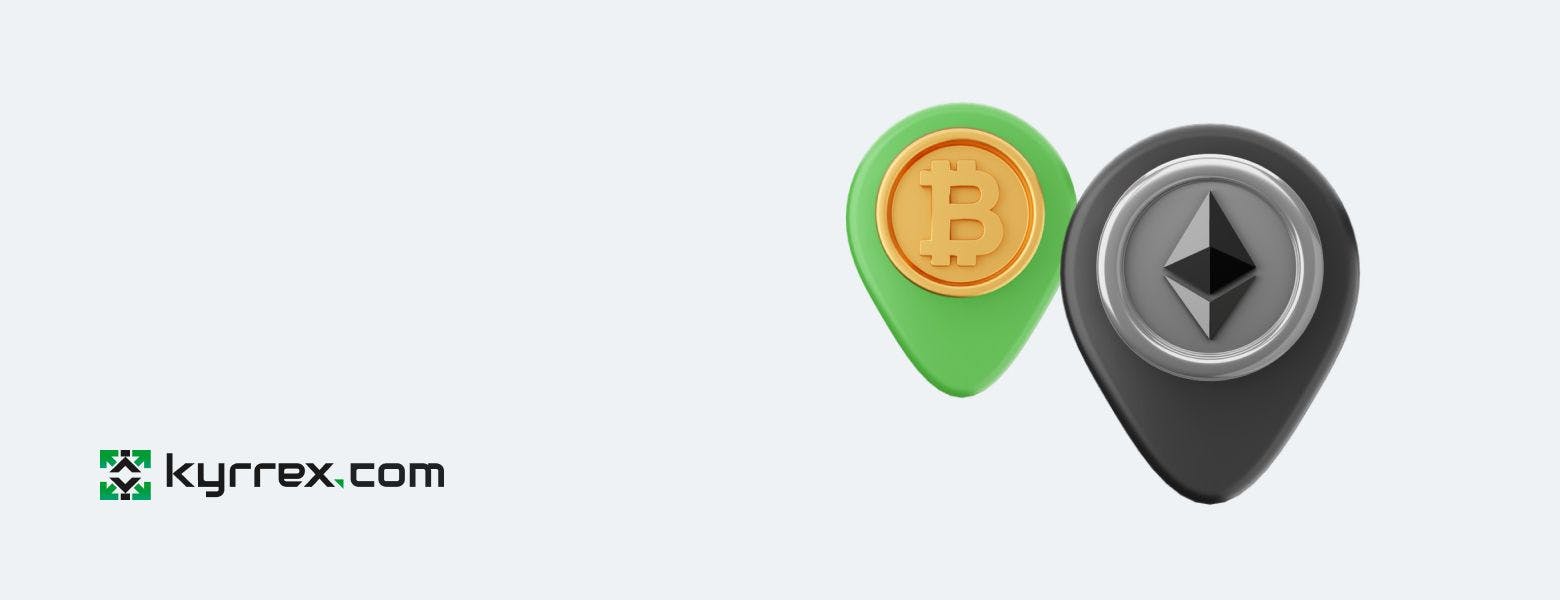
Despite these measures, vigilance should remain the watchword if you operate a wallet in the UK. You must be proactive in setting up the various security measures. Even if everything feels safe, it is better to keep your ears to the ground so you can quickly respond to new threats. As long as you understand what to do, which custody option to go for, and how to manage your assets, your investments will remain safe and you can conduct your crypto affairs with confidence.
However, as you delve deeper into crypto, you will likely encounter deeper threats that the average user may not be aware of. Hence, it is better to be well-armed with sufficient knowledge to guard against these advanced threats. Below, we shall discuss some of these less transparent security vulnerabilities and how a crypto wallet UK user can safely evade them.
Safeguarding Against Advanced Crypto Threats
Let’s talk about three of these sophisticated threats that you might come across in your Bitcoinwallet UK crypto journey:
1. Smart Contracts Attacks
If you venture out of the relative comforts of centralized exchanges like Kyrrex to the wild west of the decentralized applications (dApps) space, you are most likely going to interact with smart contracts. These pieces of codes are pivotal to the automatic transactions that take place in decentralized finance (DeFI) but aren’t necessarily foolproof. Make sure to thoroughly vet the project and its antecedents before you commit significant money.
2. Sim Swap Fraud
This is an advanced attack where a hacker gains control of your phone number with the intention to intercept 2FA messages sent by your crypto wallet UK platform. The best way to evade this tactic is to use an authenticator app as your 2FA generating medium. Because it doesn’t rely on SMS, it’s much safer. You could also plump for a hardware 2FA device if you don’t min the complexity.
3. Phishing 2.0
Phishing in the modern age has evolved beyond the messages and emails scams of old. In the crypto space, phishing now comes in form of different innovate methods designed to scam you out of your money. For example, the hackers could send fake NFTs into your best crypto wallet UK telling you to click and claim. If you click the malicious message, your wallet usually gets drained. There are also fake airdrops, fake clones of legit dApps that request for a wallet connection, and fake Telegram groups that share false information. To be on the safe side, avoid clicking stuff in your wallet you’re not familiar with and always verify that the URL of any crypto-related website you visit is authentic.

The Comeback Kid: Shiba Inu Crypto Roars Back to Life
Once written off as part of a fleeting meme coin craze, the Shiba Inu coin (SHIB) is staging a remarkable comeback. This dog-themed cryptocurrency captivated the public imagination in 2021 with its astronomical rise, generating fortunes for some SHIB crypto investors. But like so many headline-grabbing assets, SHIB's star faded as crypto entered a prolonged bear market. Now, signs point to SHIB breaking out of its slump. A surge in user activity, trading volume, and new addresses suggests "The Dogecoin Killer" is ready to reclaim the limelight.
The Sleeping Giant Stirs: How Shiba Inu Ascended from the Shadows
After months of lacklustre price action, SHIB suddenly sprang to life in late February. The Shiba Inu coin gained over 200% in February alone, its highest monthly return since the 2021 mania. This abrupt shift quickly reignited interest in the previously dormant Shiba Inu crypto community. But why?
Community Revival
According to blockchain analytics firm IntoTheBlock, daily active addresses on the SHIB network exploded from a February average of 3,100 to over 8,400 in March. On March 5th, active addresses hit a peak of 21,000—nearly a 2,000% increase from the previous month. This parabolic rise indicates the "Shiba Army"—SHIB's legion of loyal holders—has reactivated en masse.
Multiple factors likely converged to awaken the slumbering giant. The recent price surge itself generates interest by attracting new Shiba Inu crypto speculators. But SHIB's ecosystem may also be driving organic adoption. The launch of Shibarium, SHIB's Layer 2 scaling solution, and the introduction of K9 Finance, a liquid staking platform, have expanded functionality. The community's "burn portal" helps reduce circulation, increasing scarcity. While hype undoubtedly plays a role, SHIB's growth appears more substantive this time.
Market Frenzy Takes Hold
Alongside the user growth, trading activity has exploded. March 5th saw SHIB's trading volume exceed $16 billion, launching it into the top 5 most traded cryptocurrencies for that day. This rivals SHIB's daily volume at the peak of 2021's mega-rally.
The surge indicates that SHIB has regained its speculative appeal. Investors sense a potential repeat of history, hoping to ride another parabolic ascent. This buying frenzy is creating a feedback loop - higher prices attract attention, driving volumes higher, and pushing prices up further.
However, the data hints that more than reckless speculation is at play. According to analytics provider Santiment, SHIB holders have average profits of 52% on their Shiba Inu crypto investments, suggesting many are long-term believers, not just speculative punters.
The Shiba Inu Price Dance
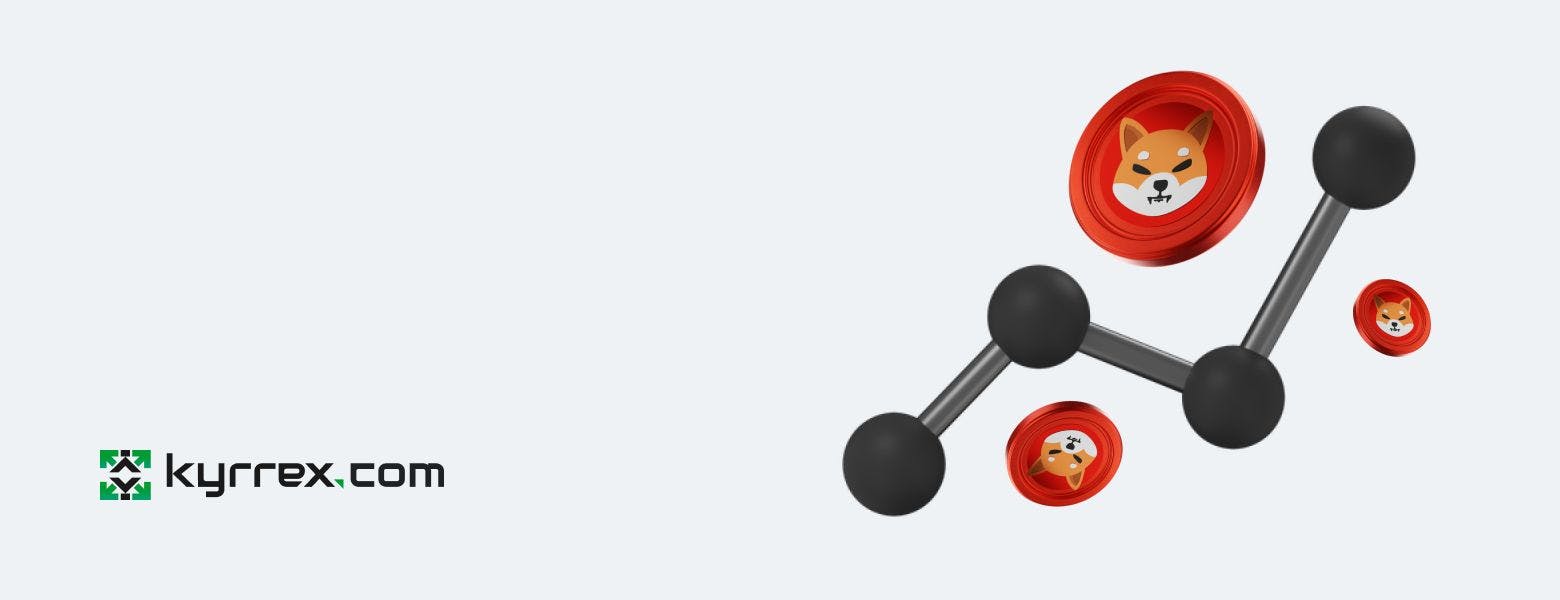
While short-term uncertainties persist, the long-term outlook seems decidedly bullish. The number of new SHIB addresses has jumped 60% in the past week, showing fresh capital flowing in. Analysts consider new address growth a strong indicator of organic user adoption.
Crypto analyst Ali Martinez has shockingly suggested SHIB could potentially reach $0.011—over 300 times its current price. While this seems fantastical, Shiba Inu has defied sceptics before.
Final Ascent or Dead Cat Bounce?
The crypto community remains divided on whether SHIB can reclaim its former glory. Critics argue little tangible progress has occurred, and its economics remain questionable. The recent mania may represent a "dead cat bounce"—a temporary resurgence before a final collapse.
However, proponents see the makings of an epic comeback. The heightened activity demonstrates that Shiba Inu still commands tremendous public interest. This perception of popularity is itself a powerful force. Investors are attracted to assets with strong narratives, and SHIB's underdog storyline resonates widely.
Shiba Inu Indicators: Red or Green?
SHIB's Relative Strength Index (RSI) remains highly elevated, indicating extreme investor enthusiasm that suggests the rally still has room to run. The Moving Average Convergence Divergence (MACD) indicator also shows strong upside momentum. As long as these technical factors align, SHIB may continue floating upward.
Of course, gravity can reassert itself at any time. With SHIB up over 300% in the past three months, a correction seems inevitable. The crucial support to watch is around $0.000033, where the rally could run out of steam and trigger panic selling. Shiba Inu has traded sideways over the past few days, hovering around the $0.000034 level. This marks a needed cooldown after the parabolic rally, which had pushed SHIB into overbought territory.
According to technical analyst Ali Martinez, SHIB faces immediate resistance at $0.000038. This area rejected the last rally attempt in late October 2021. A decisive break above could open the door to further gains, but the barrier has so far proven stubborn.
For now, traders seem content with absorbing recent gains. But with SHIB, sentiment can shift rapidly. Its speculative nature means both explosive rallies and sharp drops are never far away. This period of calm is unlikely to last long.
Shiba Inu Token Burns: A Gainful Gimmick?
According to data tracker Shibburn, nearly 14 billion Shiba Inu tokens have been permanently destroyed in just the past 24 hours. This equates to over $460,000 worth of SHIB removed from circulation at current prices. Vital figures within the project have vocally supported this supply-reduction effort, adding further legitimacy.
Lead developer Shytoshi Kusama hinted at an upcoming burn event for the related LEASH token, sparking Shiba Inu crypto community excitement. These burns help create deflationary pressure on SHIB, increasing the scarcity and theoretical value of the remaining tokens. Alongside the development updates and user growth, this narrative of a shrinking supply has reignited interest.
The fruits of this collective endeavour became clear as SHIB gained over 12% in a single day to reach $0.0000351. This represents a monthly gain of over 265%, cementing SHIB as one of crypto's top performers. The price explosion has also propelled Shibas's market capitalization back above the $19 billion threshold, reinforcing its status as a heavyweight asset.
Scaling New Heights: Towering Ambitions for 2024 and Beyond

Shiba Inu's epic price performance has prompted speculators to set their sights on ever more ambitious targets. Much will depend on the larger crypto market outlook surrounding ETFs and Bitcoin halving and the narratives that drive the imminent altcoin season.
Can Shiba Inu Break ATH in 2024?
The critical long-term barrier stands at SHIB’s all-time high of $0.000086. This historic peak represents the ultimate test and would require substantial momentum to overcome. The psychological $0.0001 mark also holds importance for unlocking SHIB’s next price discovery phase.
However, analysts caution that just breaching the $0.00004 mark poses a critical test. Previous Shiba Inu rallies have run out of steam around this resistance level. Sustaining the buying pressure to firmly overcome this barrier will be essential to keeping the uptrend intact and shooting towards the historical milestone achieved on October 28, 2021.
Can SHIB hit $0.0001 in 2024?
The mounting hype now has some asking - can SHIB realistically hit $0.0001 in 2024? This psychological level is seen as an important milestone enroute to "flipping" Dogecoin and cementing SHIB's position as the leading meme coin.
At current prices, Shiba Inu would need to gain nearly 300% to reach this mythical threshold. While still a tall order, the parabolic nature of crypto means massive daily swings of 10% or more are not uncommon. For reference, SHIB gained a staggering 900% in just one month during its initial 2021 breakout.
The ongoing bull run across crypto assets also boosts the odds of an extended SHIB surge. Funds tend to flow out of Bitcoin and into altcoins as rallies mature. The prospect of spot-based Ethereum ETFs could turbocharge this rotation. Under this scenario, SHIB could ride the wave along with other altcoins.
Dogecoin Rivalry Fuels Shiba Inu's Ambitions
Shiba Inu's recent revival is in part driven by its ambitions of dethroning Dogecoin as the leading meme coin. This Dogecoin killer is now neck and neck with DOGE in terms of market capitalization, reaching as high as #10 on CoinMarketCap's rankings. However, DOGE still holds the edge in terms of cultural cache and longevity in the cryptosphere.
By targeting DOGE, SHIB seeks to tap into the underdog narrative that propelled its rival to prominence. Both projects derived early publicity from their association with the “Doge” internet meme. This built a shared community of loyal holders who latched onto the lighthearted absurdity of owning “joke” cryptocurrencies.
However, Shiba Inu has expanded well beyond its initial origins. Upgrades like the Shibarium layer-2 network and Shibanet metaverse establish real-world utility and differentiate SHIB from pure meme-currency status. DOGE lacks comparable functionality, retaining its reputation as more of a novelty.
SHIB also enjoys zealous community backing, with proactive members coordinating initiatives like token-burning events to organically grow the ecosystem. This grassroots ethos fosters a sense of collective mission—an intangible yet invaluable asset.
Read here more about Dogecoin. How a meme became a leading cryptocurrency.
The Ultimate Target—SHIB to $0.01?
By combining greater sophistication with the power of meme culture, SHIB backers see a clear pathway to reaching its “moon” price target of $0.01. DOGE reaching $0.1 once seemed equally implausible, and its rise to fame sparked the template Shiba Inu now follows. This brewing rivalry promises fireworks as both communities compete for supremacy. Yet beyond the hype, tangible progress toward decentralization may mark the ultimate victory.
The Road Ahead for "The Dogecoin Killer"
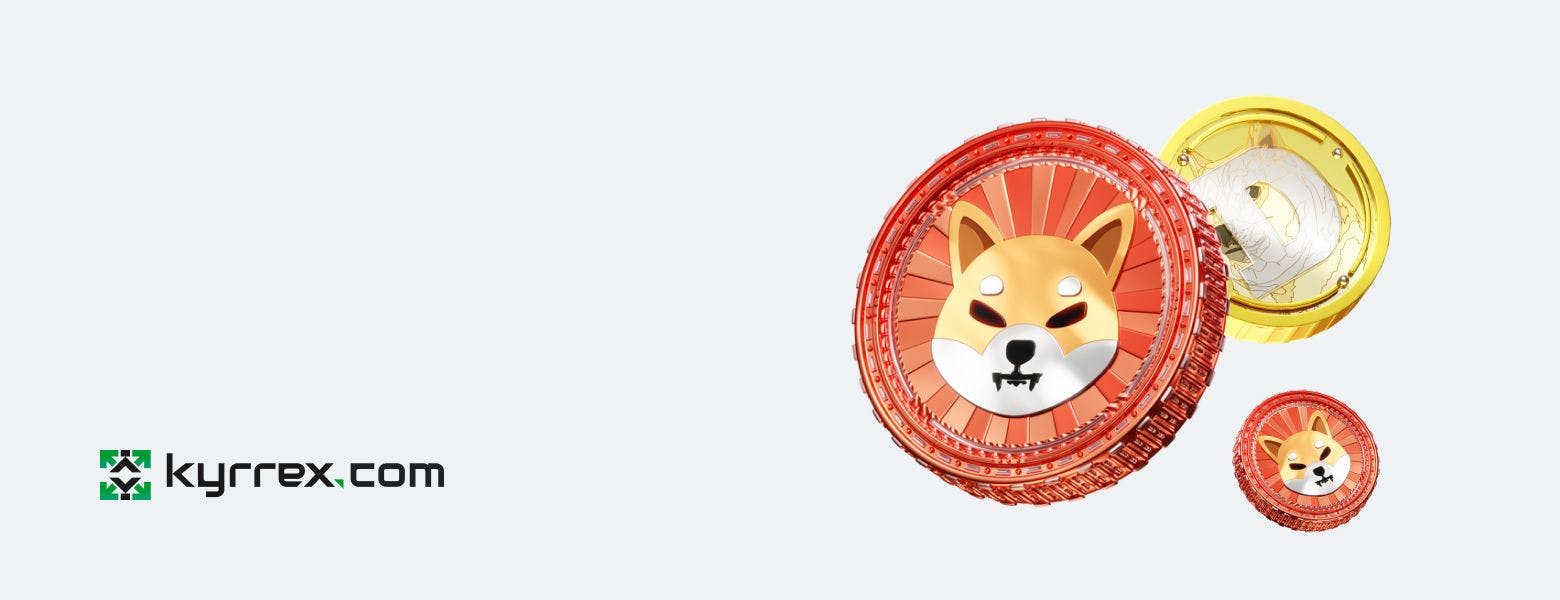
As the Shiba Inu ecosystem matures, the question becomes - does this project have meaningful longevity or will it fade away as hype dissipates? The answer likely lies somewhere in between. The Dogecoin killer appears well-positioned to cement itself as a top altcoin but needs to keep evolving beyond its meme-coin origin story.
The good news is that expansion is actively underway. Shibarium will boost speed and scalability, while Shibanet creates a virtual world integrating gaming and social media. These initiatives form the foundations for real-world utility to emerge.
Equally important is the continued community buy-in. The grassroots energy that initially rocketed SHIB to prominence has returned in full force. This suggests a loyal base of believers who will stay invested even through market turbulence. Their continued participation will remain vital.
However, scepticism regarding SHIB's fundamentals persists. Unlike platforms like Ethereum, SHIB lacks innovative technical features. The tokenomics also grant outsized control to a small group of insiders, raising questions about decentralization.
While the road ahead will have twists and turns, Shiba Inu has already defied the odds to become a borderline top 10 cryptocurrency. Its momentum appears more sustainable than during the heat of its viral 2021 surge. Perhaps even the staunchest critics should no longer bet against "The Dogecoin Killer." Its bark may end up being as fierce as its bite.
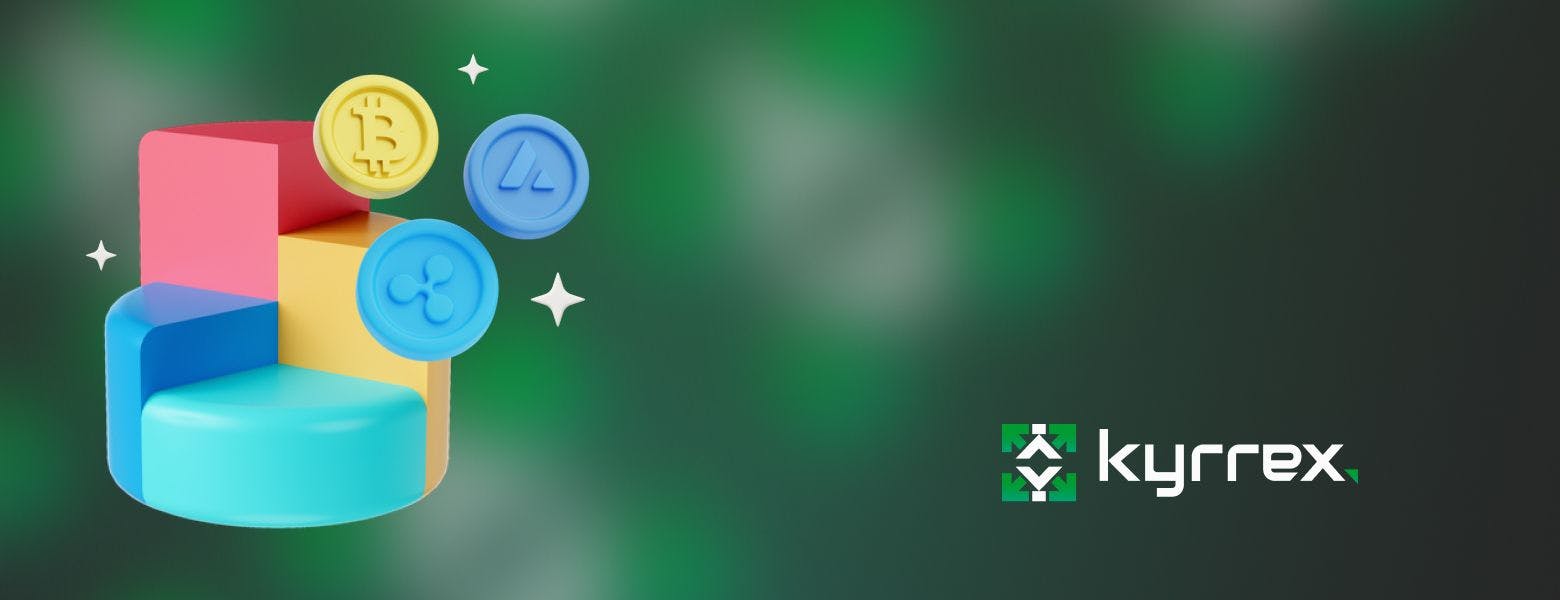
Tokenomics 101: Explaining the Basics and Beyond of Token Economy
Tokenomics, a fusion of 'token' and 'economics,' refers to the economic principles and models underpinning digital currencies within the blockchain sphere. This intricate ecosystem encompasses various factors such as token supply, demand, distribution methods, and overall market valuation, playing a pivotal role in the sustainability and success of cryptocurrency projects. Unlike traditional economies, governed by centralized financial systems and regulatory bodies, tokenomics operates within a decentralized framework, offering innovative approaches to value creation, transfer, and management.
As the digital asset landscape continues to expand, understanding the fundamentals of token economy becomes crucial for investors, developers, and enthusiasts alike. This article aims to demystify tokenomics, guiding you through its core components, real-world applications, and the impact on the broader crypto economy.
Tokenomics and token economy
Tokenomics represents the study and structural framework of a token's economy within the blockchain sphere, encompassing aspects like supply, demand, distribution, and valuation. In this system, the token economy operates under a unique set of rules and mechanisms distinct from traditional economies. Supply refers to the total quantity of tokens available, which can be fixed like Bitcoin's 21 million cap, or variable as seen in some governance token models. Demand is influenced by the token's utility, perceived value, and market conditions.
Distribution entails how tokens are allocated or issued to users, investors, and the project's team, which can significantly impact the token's initial and ongoing valuation. Valuation, meanwhile, derives from market perceptions, utility, and the token's inherent properties, such as security features or governance rights.
Unlike traditional monetary systems controlled by central authorities, the token economy leverages blockchain technology to enable a decentralized, transparent, and secure environment. Here, market dynamics are not influenced by central bank policies but by code, community consensus, and decentralized protocols. This paradigm shift from centralized to decentralized finance represents a significant evolution in how value and economy are conceptualized and managed within the digital age.
Key Components of Tokenomics
Tokenomics delves deep into the operational and economic facets of tokens within blockchain projects. Understanding these components is critical for grasping how tokens gain and maintain their value.
1- Minting
The process of minting involves creating or generating tokens within a blockchain project. Different protocols have varied methods; Bitcoin, for example, rewards miners for validating transactions, thus "minting" new coins. Ethereum initially distributed Ether through an Initial Coin Offering (ICO), but also mints new Ether as rewards in transaction processing. The method of minting impacts the initial and ongoing supply of tokens, influencing scarcity and value.
2- Utility
Tokens must serve a purpose within their ecosystems; this utility drives demand. Bitcoin's primary utility is as a digital currency, while Ethereum's Ether is used to perform transactions and run applications on its network. Other tokens might grant voting rights in project governance (governance tokens), access to services, or act as a stake in decentralized finance (DeFi) platforms.
3- Supply and Demand
The principles of supply and demand heavily influence token economics. If a token has a capped supply (like Bitcoin), scarcity can increase demand, potentially raising its value. Conversely, if a token's supply is vast or infinite, its value might be lower unless there is significant demand. Market perception, technological advancements, and broader economic factors also play into this dynamic.
4- Distribution and Allocation
The method of token distribution can affect its long-term value and security. Initial allocation might occur through public sales (ICOs or IDOs), community rewards, or allocations to founders and early investors. Projects like Solana and Cardano have allocated significant portions of their tokens to insiders but have maintained public interest through transparency and project utility.
5- Vesting and Inflation
Vesting schedules and inflation control are critical for maintaining a token's value and ensuring project longevity. Vesting prevents market flooding by slowly releasing tokens to developers or investors, maintaining stability. Projects can control inflation through mechanisms like token burning or halving events, as seen with Bitcoin, which undergo periodical "halvings" reducing the reward for mining new blocks, thus controlling the rate of new token introduction into the ecosystem.
Each of these components must be carefully balanced to create a sustainable and successful tokenomics model. Missteps in any area can lead to issues like rapid devaluation, lack of interest, or even project failure.
Examples of Real-World Token economy in Action
Tokenomics comes to life in various blockchain projects, each employing unique strategies to enhance their ecosystem's value and usability.
Ethereum
As a pioneer, Ethereum revolutionized the blockchain space by introducing smart contracts. These are self-executing contracts with the terms of the agreement directly written into lines of code. Ethereum's token, Ether, serves primarily as a utility token, necessary for conducting transactions and executing contracts on the Ethereum network. Its initial distribution was through an ICO, establishing an initial supply that has since increased due to block rewards. Ethereum's shift from Proof of Work (PoW) to Proof of Stake (PoS) in the Ethereum 2.0 upgrade impacts its tokenomics by changing the reward structure and potentially reducing the rate of new Ether creation, influencing scarcity and value. Transaction fees, known as "gas," also play a crucial role, as they vary based on network demand, adding an economic layer to operation prioritization.
Solana
Known for its incredible speed and lower transaction costs, Solana has emerged as a highly efficient blockchain platform. Solana's native token, SOL, is used to pay for transactions and for staking as part of its Proof of History (PoH) and Proof of Stake (PoS) hybrid consensus mechanism. The initial supply was determined at its launch, with ongoing emissions governed by inflationary policies aimed at incentivizing validators and stakers. Solana has a deflationary aspect as well, where transaction fees are burned, reducing the total supply and potentially increasing the value of remaining SOL tokens over time.
Cardano
Cardano differentiates itself through a strong emphasis on peer-reviewed academic research and formal methods in its development process, ensuring a high degree of security and scalability. ADA, Cardano's native token, is used for transaction fees and staking within its PoS consensus mechanism, Ouroboros. The initial supply was set during its ICO, with a defined maximum supply cap to prevent inflation. Staking ADA not only supports network security and operation but also rewards users, distributing new ADA created through inflation and transaction fees based on their stake. The design aims to balance between rewarding holders and ensuring long-term sustainability, reflecting Cardano's research-driven approach to blockchain development.
Diverse approaches to tokenomics can significantly impact a project's success and the value of its associated tokens. Each project's unique strategy — whether focusing on technological innovation, efficiency, or academic rigor — plays a critical role in shaping its token economy and overall ecosystem.
Impact of Token economy on Investors and Projects
Token economy significantly influences both investor decision-making and the overall success of cryptocurrency projects. Investors scrutinize tokenomics for insights into a project's long-term viability, supply scarcity, and potential return on investment. They assess factors such as token distribution, utility, and inflationary controls to gauge the risk and potential growth of their investments. A project with clear, fair token distribution and a practical utility for its token is more likely to attract and retain investors.
For projects, well-structured tokenomics is crucial for sustainability and achieving set objectives. Proper tokenomics ensures that the project is adequately funded and that incentives are aligned between the developers, users, and investors. It helps maintain a balanced ecosystem where tokens circulate effectively, facilitating transactions, rewarding participants, and funding continued development. The long-term success and adoption of crypto projects heavily depend on their tokenomic models, which should be designed to support growth, stability, and engagement within the ecosystem.
Trends and Challenges in Crypto Token Economy
Trends already influencing token economics include the integration of governance tokens, enhancing decentralized decision-making within projects. These tokens empower holders with voting rights on project developments, potentially increasing user engagement and investment in the project's future. Additionally, the trend towards deflationary token models, where the total supply decreases over time, could create scarcity, driving demand and potentially increasing token value.
Another emerging trend is the use of layer-two solutions and cross-chain interoperability to enhance transaction efficiency and reduce costs, directly impacting the utility and attractiveness of a project's token. However, these advancements come with challenges, including regulatory uncertainty and the need for robust security measures to prevent fraud and ensure user trust.
However, creating a balanced and sustainable token economy remains a complex challenge. Projects must design tokenomics that incentivize participation and growth without leading to over-centralization or excessive inflation. They must navigate these waters while maintaining compliance with an ever-changing global regulatory landscape, which can significantly impact token valuation and project operations.
Conclusion
Tokenomics is essential in assessing a cryptocurrency's potential. A well-designed economic model can lead to a project's success, while a poor one can doom it. For investors and creators alike, a deep understanding of tokenomics is crucial in navigating the burgeoning field of digital currencies.
For more info and trendy articles check our Crypto Blog.

MiCA Unveiled: Guide to Licensing and Compliance for Crypto Companies
In a fragmented regulatory landscape, the Markets in Crypto-Assets (MiCA) regulation emerges as a beacon of standardization and security. The European Union's pioneering approach to crypto regulation, embodied in MiCA, sets a precedent for the global crypto market. MiCA isn't just another regulatory hurdle; it's a transformative framework that promises to bring clarity and confidence to both crypto businesses and investors. As we delve into this comprehensive guide, we'll uncover the intricacies of MiCA, illuminating the path for businesses striving to navigate this new regulatory landscape.
Understanding the Scope of MiCA
The MiCA crypto regulation is tailored to encompass the broad spectrum of crypto-assets, excluding only those classified as financial instruments under existing EU legislation. This inclusivity marks MiCA as a comprehensive framework, addressing a range of assets from stablecoins to utility tokens. The regulation aims to establish uniform rules across all EU member states, effectively eliminating the regulatory patchwork that currently complicates the crypto market.
The heart of MiCA revolves around consumer protection, market integrity, and financial stability. By introducing a standardized set of rules, MiCA crypto regulation ensures a safer environment for investors, shielding them from the market's volatility and the potential risks associated with digital asset investments. For crypto businesses, this translates to a more predictable and secure operating environment.
Licensing Requirements under MiCA
Navigating the licensing landscape under MiCA requires a deep understanding of its requisites. Primarily, any crypto company operating within the EU must be fully licensed and compliant with MiCA standards. This includes a broad spectrum of entities from crypto exchanges to wallet providers.
The licensing process under MiCA is meticulous and requires companies to demonstrate a high level of operational and financial robustness. Key elements include robust IT infrastructure, stringent AML (Anti-Money Laundering) policies, and comprehensive risk management frameworks. These requirements are not just formalities; they are essential to ensuring that companies can withstand the volatile nature of the crypto market and protect their clients' investments.
Here is a breakdown of the requirements and standards for obtaining a MiCA crypto license:
- Submission of Application: Legal entities or other undertakings intending to provide crypto-asset services must submit their application for a MiCA license to the competent authority of their home Member State.
- Application Contents: The application should contain specific information, including proof of the good repute and appropriate knowledge, skills, and experience of the management body, details of shareholders with qualifying holdings, descriptions of internal control mechanisms, ICT systems, procedures for segregation of clients' crypto-assets and funds, and complaints-handling procedures.
- Assessment of Completeness: Competent authorities will assess whether the application is complete within 25 working days of receipt. If the application is not complete, a deadline will be set for the applicant to provide any missing information.
- Notification of Complete Application: Once an application is deemed complete, competent authorities will notify the applicant crypto-asset service provider.
- Assessment of Compliance: Competent authorities will assess the application for compliance with MiCA requirements within 60 working days of receiving a complete application. This assessment may include a review of the crypto-asset white paper and cooperation with anti-money laundering and counter-terrorist financing bodies.
- Draft Decision: A fully reasoned draft decision granting or refusing authorization will be made by the competent authorities based on the assessment.
- Potential Suspension of Assessment: The assessment period may be suspended if the competent authorities request additional information from the applicant. The suspension shall not exceed 20 working days.
- Consultation Before Authorization: Before granting or refusing authorization, competent authorities shall consult relevant bodies or authorities as required.
These steps outline the structured approach to obtaining a MiCA license, focusing on compliance, transparency, and the integrity of the applicant.Top of Form Each step in this process is crucial for obtaining and maintaining a MiCA crypto license. It's important for companies to approach each stage with thorough preparation and a commitment to maintaining high standards of compliance.Top of Form
MiCA's licensing requirements are designed to foster a transparent, fair, and stable crypto market in the EU. For a crypto-fiat bank like Kyrrex, complying with these regulations is a testament to its commitment to providing secure and compliant crypto services. Kyrrex's alignment with MiCA regulations showcases its dedication to maintaining the highest standards of operational integrity and customer protection.
Businesses that Fall Under the MiCA Licensing Requirements
Here's a general list of the types of companies and businesses that the MiCA licensing requirement covers:
- Crypto-Asset Service Providers (CASPs): These include entities operating trading platforms, exchanges (crypto-to-fiat and crypto-to-crypto), and those offering custody or administration services for crypto-assets.
- Issuers of Asset-Referenced Tokens (ARTs): Companies issuing ARTs, which are crypto-assets aiming to stabilize their value by referencing other assets or a combination of assets, including fiat currencies.
- Issuers of E-Money Tokens (EMTs): Entities issuing EMTs, which are designed to maintain stable value by referencing a single fiat currency, similar to electronic money.
- Providers of Crypto-Asset Exchange Services: Companies facilitating the exchange of crypto-assets for fiat currency or other crypto-assets.
- Crypto-Asset Custody and Wallet Providers: Businesses offering secure storage and management of crypto-assets for clients.
- Firms Providing Crypto-Asset Advisory Services: Companies offering advice related to investment in crypto-assets.
- Crypto-Asset Issuers (excluding ARTs and EMTs): Entities responsible for the creation and initial distribution of various types of crypto-assets, excluding asset-referenced and e-money tokens.
Compliance Challenges and Solutions
Compliance with MiCA presents a unique set of challenges for crypto companies. Adapting to a new regulatory environment requires significant changes in operational, legal, and compliance structures. The primary challenge lies in the constant evolution of the crypto market, which demands that companies remain agile and informed.
To overcome these challenges, companies should implement a number of constructive measures, especially the ones outlined below:
- Invest in Compliance Systems: Companies should allocate resources to develop and maintain robust compliance systems that align with MiCA standards.
- Staff Training: Regular training programs for staff to ensure they are up-to-date with MiCA regulations and compliance procedures.
- Conduct Regular Audits: Implement a schedule for regular internal audits to assess and ensure adherence to compliance standards.
- Ongoing Reviews: Conduct periodic reviews of internal processes and policies to align with evolving MiCA regulations.
- Technological Advancements: Utilize advanced technology solutions to streamline and enhance compliance processes.
- Collaboration with Regulators: Engage in ongoing dialogue and collaboration with regulatory bodies for insights and guidance on compliance matters.
- Industry Collaboration: Work alongside other industry players to share best practices and navigate MiCA compliance complexities together.
- Proactive Approach: Adopt a forward-thinking strategy to view compliance not just as a requirement, but as an opportunity for growth and establishing market leadership.
Each of these steps plays a crucial role in ensuring that a company meets the MiCA compliance requirements. By adopting a proactive approach, companies can turn these challenges into opportunities for growth and market leadership.
For Kyrrex, adhering to MiCA standards is part of its broader strategy to ensure the highest level of service quality and security. It reflects the company's dedication to being at the forefront of regulatory compliance, setting a benchmark for other players in the industry.
Preparing for the Future: Next Steps for Crypto Companies
As MiCA paves the way for a regulated crypto market in the EU, companies need to prepare for its implementation. The first step is gaining a thorough understanding of MiCA's provisions and how they impact different aspects of crypto operations.
Crypto companies should start by assessing their current compliance status and identifying areas that need improvement. This may involve restructuring certain business practices, enhancing security measures, and updating internal policies.
It's also crucial for companies to stay updated with ongoing regulatory developments. Engaging with legal and compliance experts can provide valuable insights and ensure that companies remain on the right side of these evolving regulations.
Conclusion
MiCA marks a significant milestone in the journey towards a regulated and secure crypto market. For companies operating in this space, understanding and complying with MiCA is not just about adherence to regulations; it's about embracing a new era of transparency, security, and consumer trust.
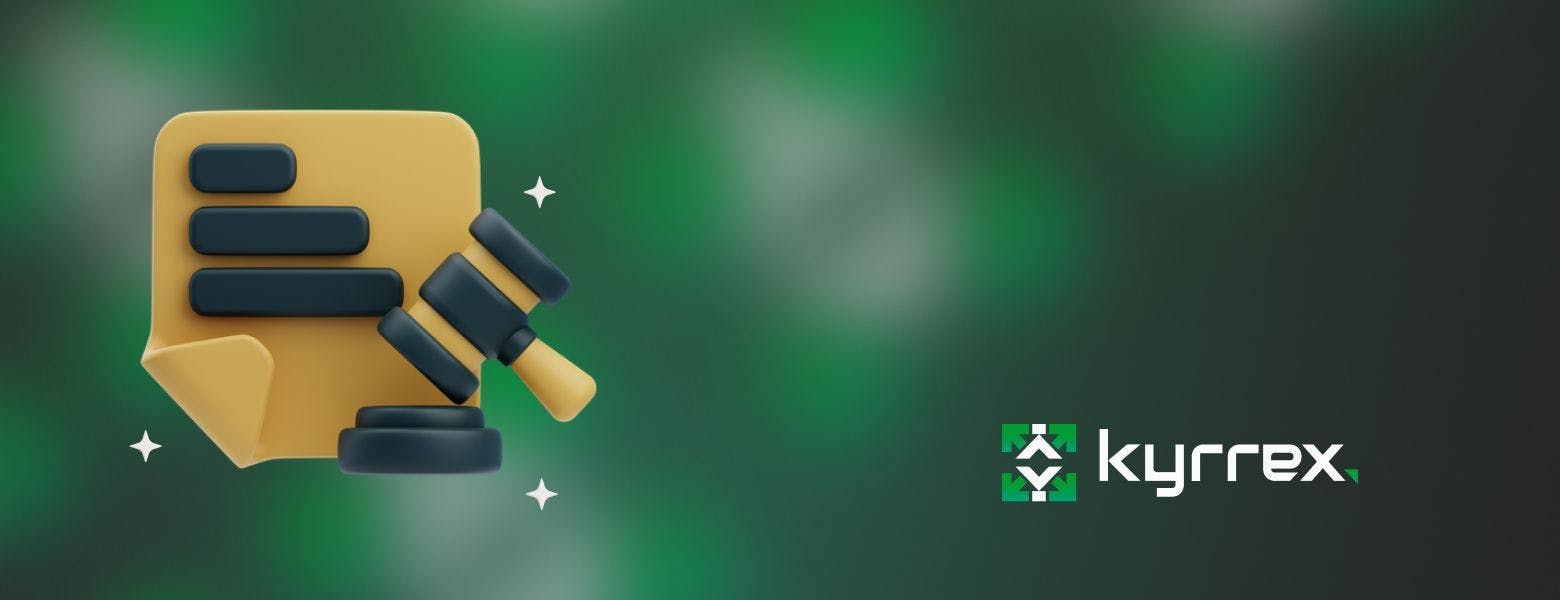
MiCA crypto regulation: How MiCA Framework Revolutionizes Crypto Asset Management in the EU
The European Union has taken a pioneering step with the introduction of the MiCA (Markets in Crypto-Assets) framework or MiCA crypto regulation. This groundbreaking regulation represents a significant shift in the landscape of crypto asset management within the EU, marking a transition from a largely unregulated space to one guided by clear rules and standards. At the heart of this change is the need to establish a harmonized and secure environment for both investors and crypto service providers, ensuring that the dynamic world of digital currencies operates within a framework that promotes trust, transparency, and stability.
The adoption of the MiCA crypto regulation is not just a regulatory milestone; it’s a transformative movement that reshapes how digital assets are managed, traded, and perceived in one of the world's largest economies. With this new era comes a host of opportunities and challenges for stakeholders in the crypto market. As the EU embraces this change, understanding the nuances of MiCA becomes crucial for anyone involved in the crypto space – from seasoned investors to emerging fintech enterprises.
Understanding MiCA Crypto Regulation
The MiCA crypto regulation, a cornerstone of the EU's approach to digital assets, heralds a new chapter in the governance of the crypto market. This regulatory framework is designed with the primary aim of safeguarding investors and ensuring market integrity, a crucial step given the volatile nature of cryptocurrencies. MiCA crypto regulation establishes a standardized set of rules across EU member states, addressing key areas such as operational resilience, consumer protection, and market transparency.
One of the standout features of the MiCA framework is its comprehensive coverage. It extends to various forms of crypto-assets, including tokens, stablecoins, and digital wallets, ensuring that all aspects of crypto asset management fall under its purview. This broad scope is vital in a market known for its diversity and rapid innovation.
Moreover, MiCA crypto regulation introduces rigorous requirements for service providers in the crypto market. These entities must adhere to strict operational and organizational standards, ensuring that they can withstand market shocks and protect consumer assets. This aspect of MiCA is crucial, as it brings a level of security to the crypto market that was previously lacking, building trust among investors and users.
The regulation also emphasizes the importance of transparency. Under MiCA, issuers of crypto-assets are required to provide detailed whitepapers, offering clear and comprehensible information about their products. This transparency is key to empowering investors, allowing them to make informed decisions based on reliable data.
In essence, the MiCA framework is not just about imposing restrictions; it's about fostering a stable and trustworthy environment where crypto assets can thrive in a regulated and secure ecosystem. This balance between innovation and regulation is what sets MiCA apart, paving the way for a more resilient and mature crypto market within the EU.
Impact on Crypto Asset Management
The MiCA crypto regulation framework significantly alters the landscape of crypto asset management in the EU, offering both challenges and opportunities. A key impact is the heightened sense of security for investors. By standardizing regulatory practices across member states, MiCA mitigates the risks associated with crypto investments, such as fraud and market manipulation. This increased security is likely to boost investor confidence, potentially attracting more mainstream and institutional investors to the crypto market.
For crypto service providers, MiCA mandates a robust compliance framework. While this might initially seem burdensome, it ultimately benefits these entities by enhancing their credibility and reputation. Compliant firms are seen as more reliable and trustworthy, which can be a competitive advantage in attracting customers who are cautious about entering the crypto space.
Another significant impact of MiCA is on market stability. The regulation's emphasis on transparency and accountability helps in reducing market volatility, a characteristic often associated with cryptocurrencies. By requiring clear disclosures and responsible financial practices, MiCA contributes to a more predictable and stable market environment.
However, MiCA also poses some operational challenges. Adapting to new regulatory requirements demands resources and efforts, particularly for smaller firms. Nonetheless, this compliance effort is a strategic investment in building a sustainable business model in a rapidly evolving industry.
Kyrrex: MiCA crypto regulation in Banking and Neobanking
In the context of the MiCA regulation, the role of neobanking in crypto asset management gains new significance. Neobanking, a modern form of banking that operates exclusively online without traditional physical branch networks, is rapidly becoming a key player in the financial technology sector. These digital banks offer innovative financial services, including those related to cryptocurrencies, aligning well with the digital and dynamic nature of crypto assets.
The advent of MiCA brings neobanks into the spotlight, as they are well-positioned to adapt quickly to the new regulatory requirements due to their digital-first approach. This agility makes neobanks an attractive option for both retail and institutional clients looking to manage their crypto assets in a compliant and user-friendly environment.
Kyrrex, a leader in the digital finance space, exemplifies this synergy between neobanking and MiCA compliance. With a focus on integrating the flexibility of digital banking with the security and compliance demands of MiCA, Kyrrex MiCA banking services stand out. The company offers innovative solutions that comply with MiCA regulations, ensuring that clients can manage their crypto assets confidently and securely.
Kyrrex’s Whitelabel solutions, in particular, are tailored to meet the needs of businesses seeking to enter the crypto market or expand their existing offerings. These solutions are designed not only to be compliant with MiCA regulations but also to provide a seamless and efficient banking experience. This blend of regulatory adherence and innovative banking solutions positions Kyrrex as a frontrunner in the EU's evolving crypto landscape.
Future of Crypto Asset Management in the EU
The implementation of the MiCA crypto regulation framework in the EU is not just a regulatory update; it's a catalyst for innovation and growth in the crypto asset management sector. As the industry aligns with these new standards, we can expect to see an evolution in how crypto assets are managed, traded, and perceived.
One of the key changes will be the increased institutional participation. With a clearer regulatory environment, traditional financial institutions are more likely to enter the crypto space, bringing with them a wave of professional expertise and capital. This infusion is expected to boost the market's maturity and liquidity.
Another area of potential growth is in the development of new crypto-related products and services. As compliance with MiCA becomes the norm, businesses will have a stable platform to innovate while adhering to regulatory standards. This could lead to an expansion in services like crypto-based lending, staking, and novel investment products tailored to meet the needs of a diverse range of investors.
Additionally, the MiCA framework might encourage more robust cross-border collaborations within the EU. The harmonization of regulations across member states can facilitate smoother transactions and partnerships, fostering a more interconnected European crypto ecosystem.
In conclusion, the MiCA regulation is set to reshape the landscape of crypto asset management in the EU, fostering a more stable, trustworthy, and innovative market. This regulatory framework, by providing clarity and security, lays the groundwork for a thriving and sustainable crypto economy within the European Union.
- 1
- 2
- 3
- 4
- 5
- 6
- 7
- 8
- 9
- 10
- 11
- 12
- 13
- 14
- 15
- 16
- 17
- 18
- 19
